3 days of design: Copenhagen 2023
I recently returned from 3 days of design, the 10th anniversary of the show featuring Danish designers in Copenhagen. This was my first visit to the exhibition, and I was pleasantly surprised. Because 3 days of design is a younger exhibition, it doesn’t yet have the visibility or following that a globally recognized show like Milan Design Week draws, but this is actually a good thing if you really want to see what Danish designers have to offer. Milan Design Week is often so crowded, you spend a fair amount of time waiting in line to get into an exhibition, only to fight the crowds once you are inside, making it a challenge to see what it is you came to see. 3 days of design is a much more intimate affair, featuring mainly Danish designers, and drawing more of a Scandinavian crowd.
Like Milan Design Week, 3 days of design is spread across the showrooms and exhibition spaces throughout Copenhagen, but it really isn’t a problem getting around the city with trains, buses and bikes. June is an ideal time to host 3 days of design; the weather was gorgeous for exploring, and it’s not yet crowded with summer tourists at this point in June.
Another highlight of 3 days of design was the app created for the exhibition. It allowed you to see all of the events tied to the show and add them to your agenda, built into the app. There were many interactive activities, lectures, coffees and cocktail hours, all open to the public, with all the details available through the app. It felt much more inclusive than Milan Design Week; not just invite only or press events but most events open to the general public. The brands truly wanted to engage with their guests, whether they were designers or not.
General themes for Danish Design:
- Biophilia: Whether showrooms used huge potted plants near the windows, dried flowers, paper flowers, or fresh flowers, there was definitely a tendency towards nature.
- Natural, raw woods and other natural materials: Danish design has a strong preference for natural, raw woods; the flooring, tables, chairs all feature pale, natural, raw woods, usually birch or oak, and sometimes pine. Lots of caning is used on chairs and casegoods. Bent wood/ rattan is also a large feature of Danish furniture.
- Most design was tonal, and stayed within the same hues. The Danish aesthetic is not one that features bold patterns or colors. It is clean lined, restrained, and lacks unnecessary ornamentation, but truly illustrates the epitome of craftsmanship.
Some of the Danish showrooms I visited include the following:
Umage:
You probably recognize their famous goose feather lamp from a few years ago, made from recycled goose feathers. In fact, this brand has a strong environmental focus, with many products designed to have interchangeable fabric pieces, so they can be swapped or replaced, rather than disposing of the whole piece of furniture. It is a really cool concept. Their showroom is in a beautiful building that feels like a home, with seperate rooms designated for different uses: foyer, sitting room, dining room, etc:
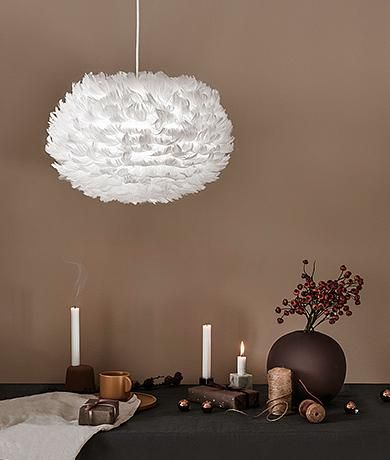
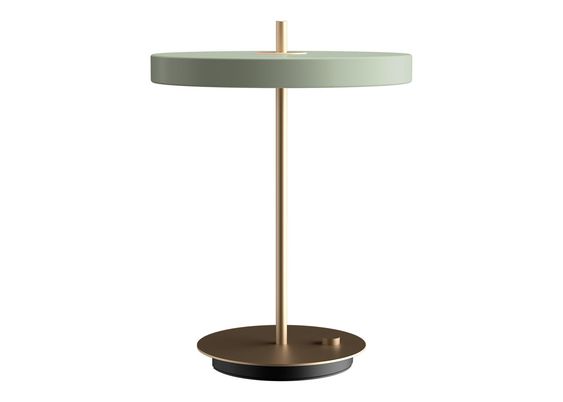
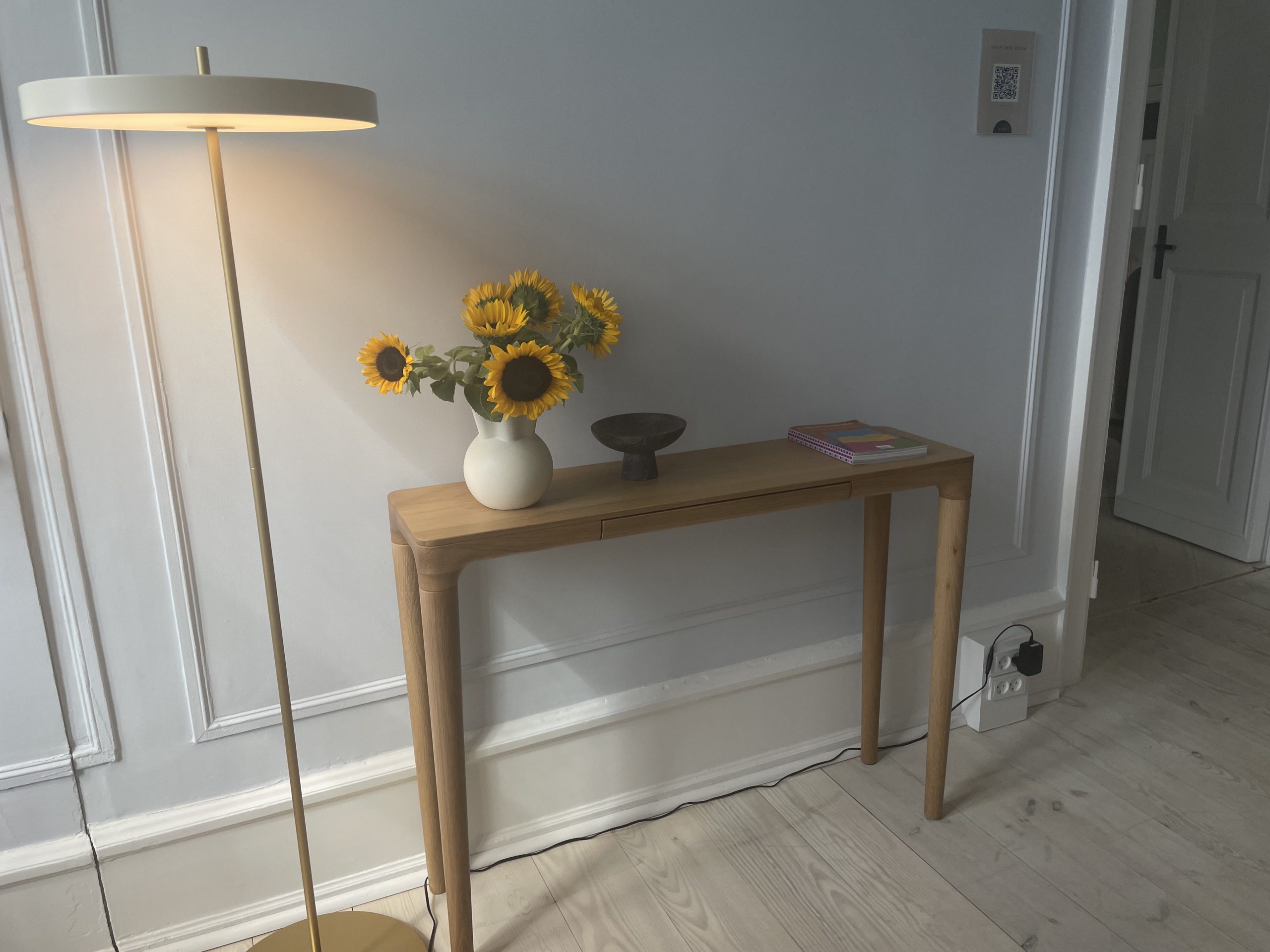
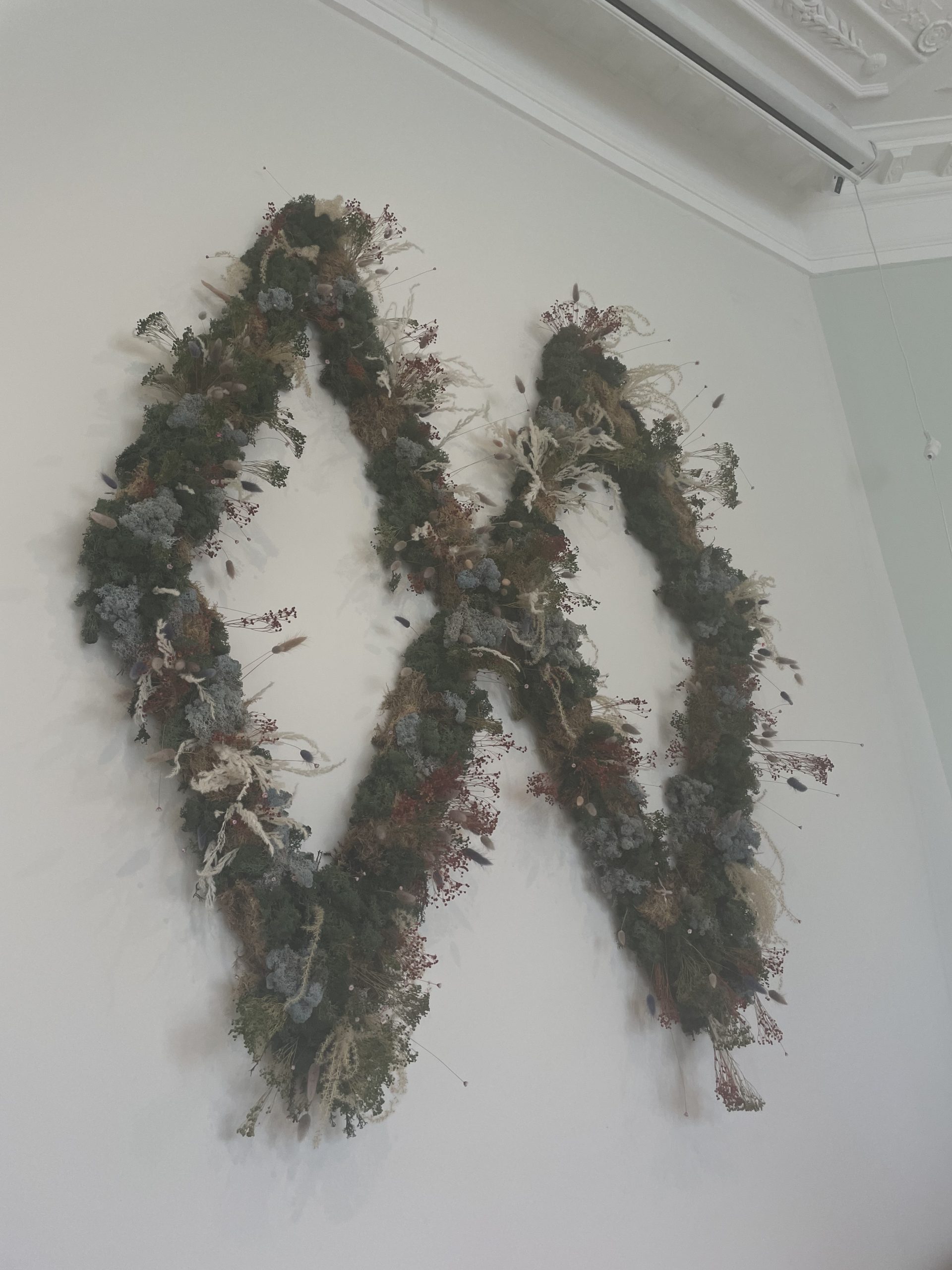
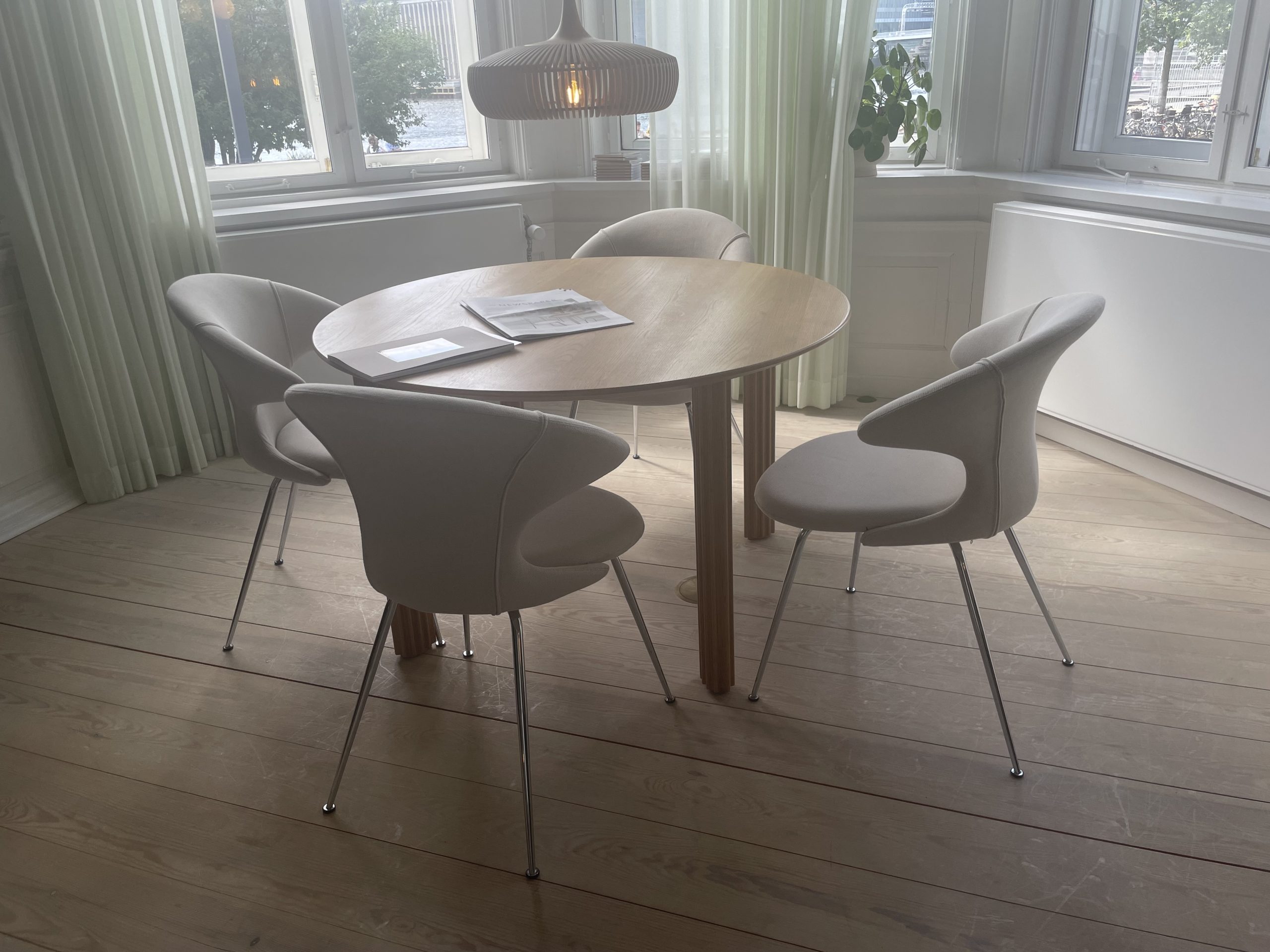
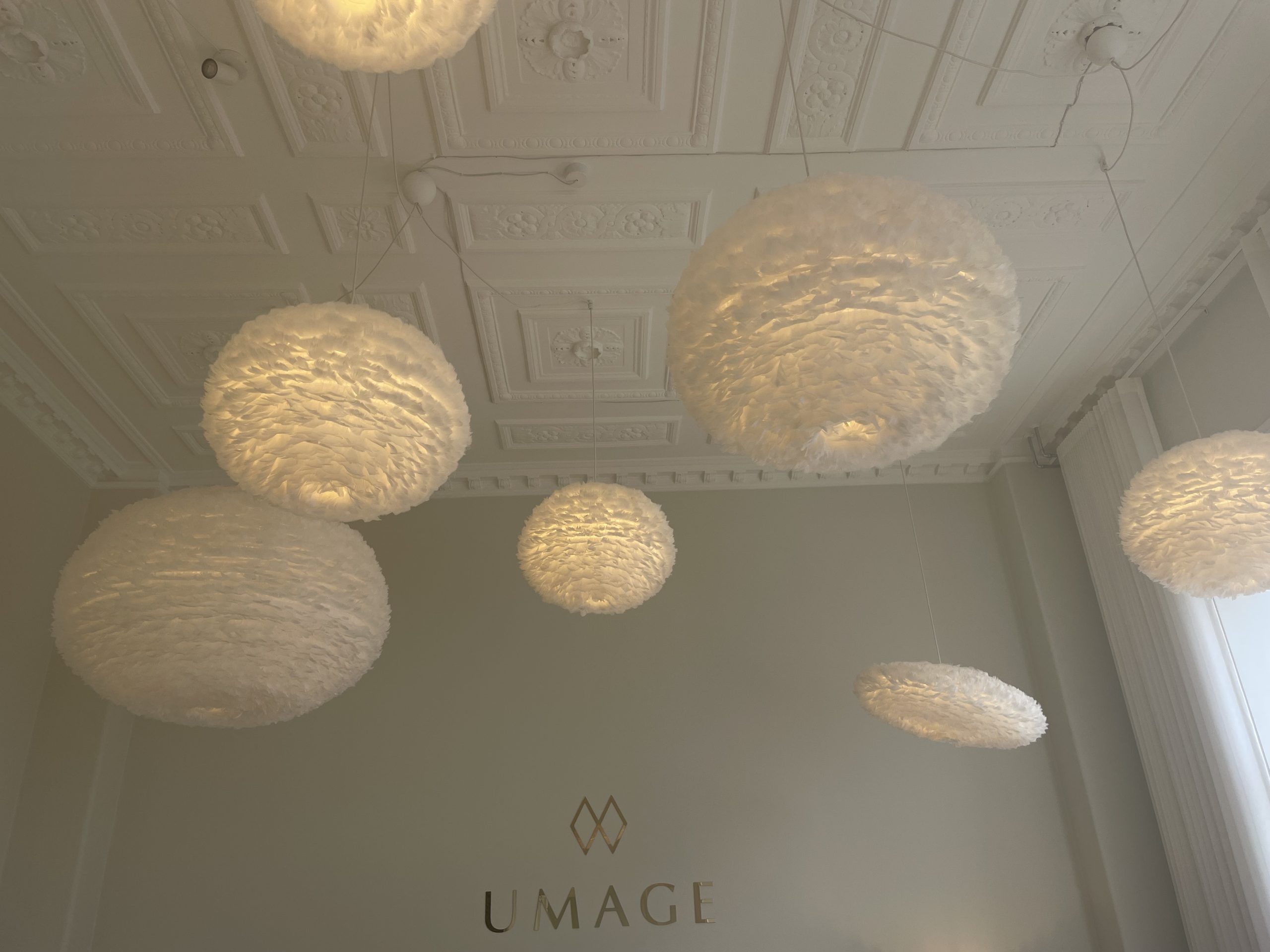
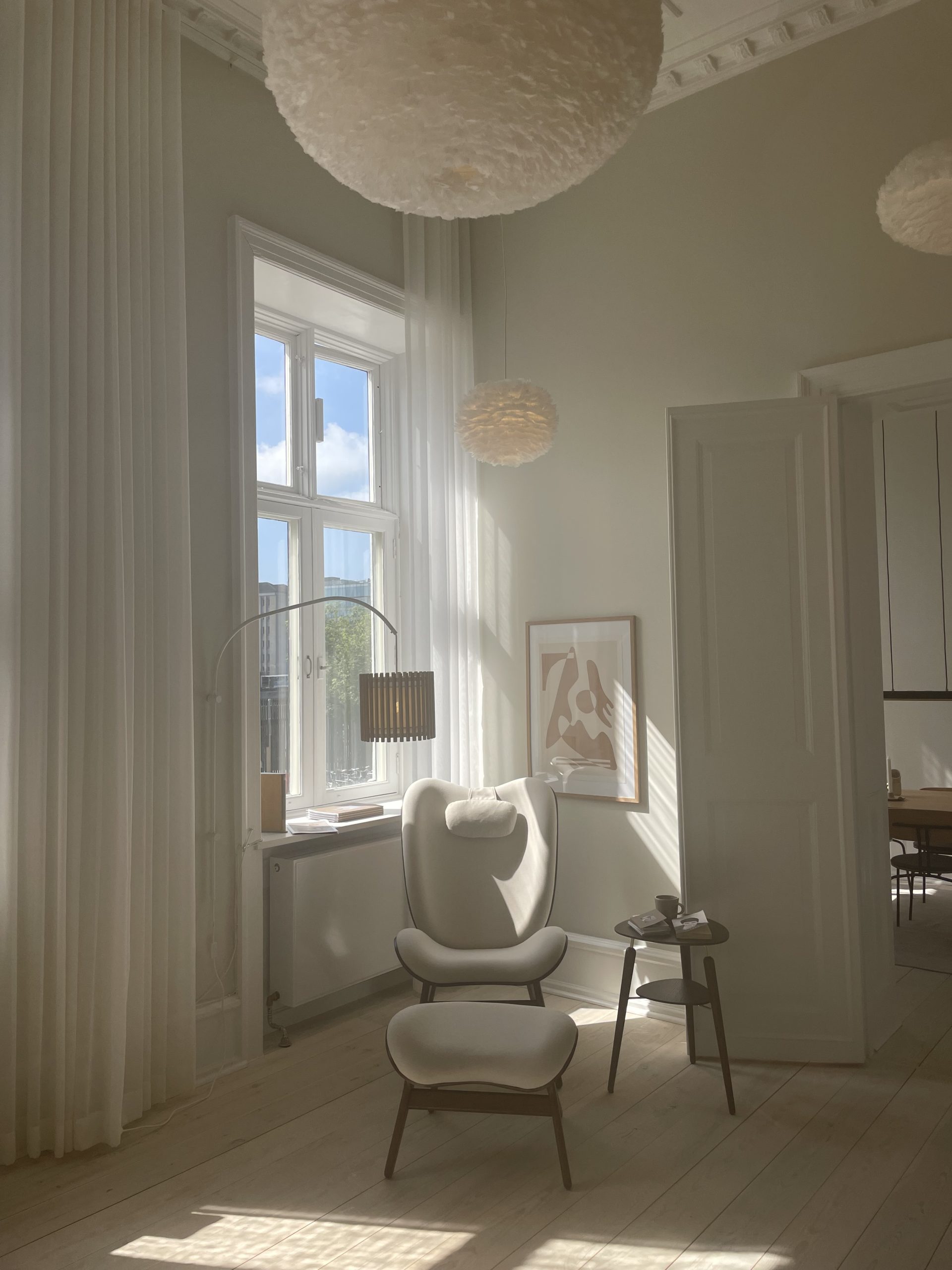
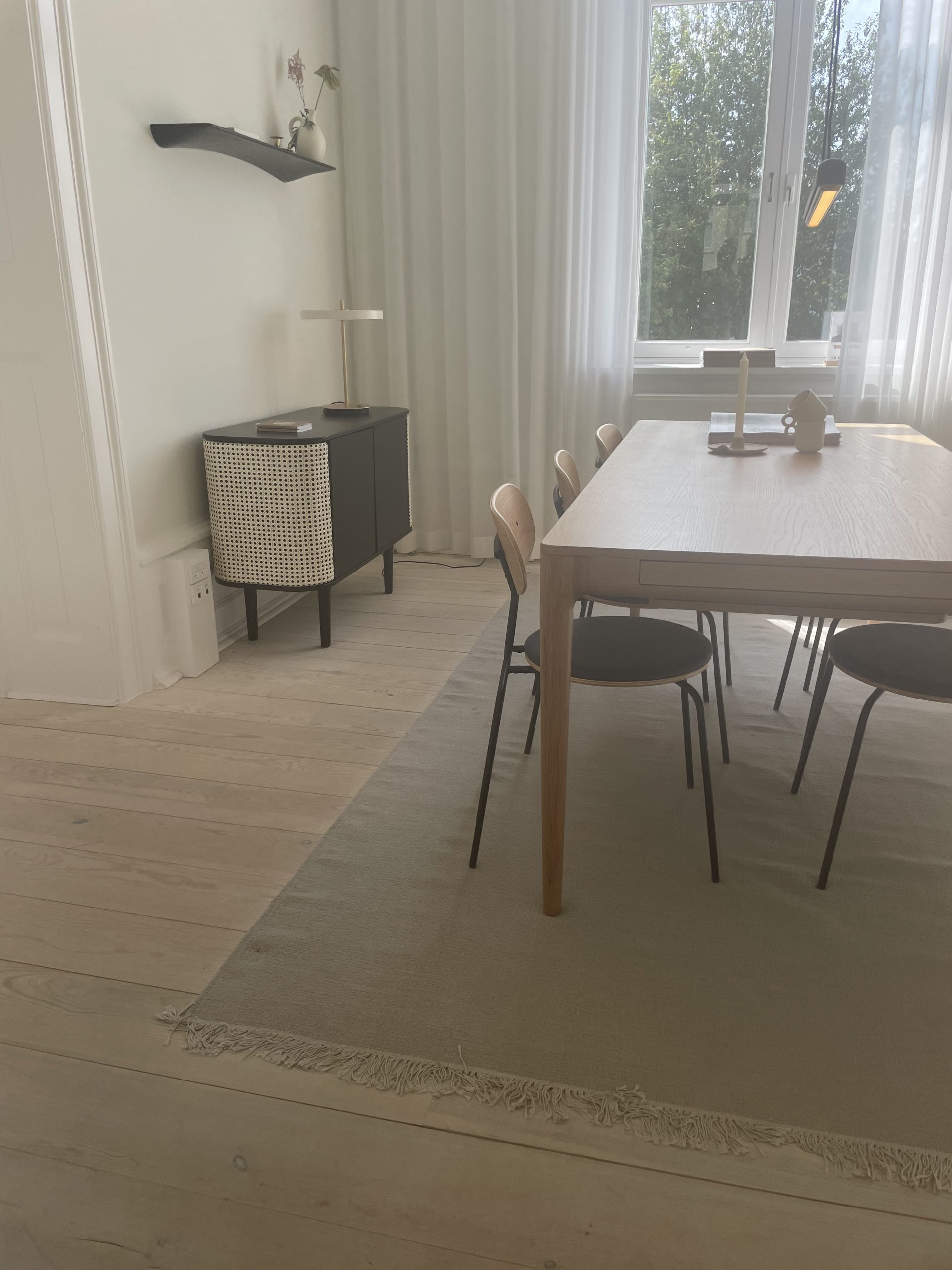
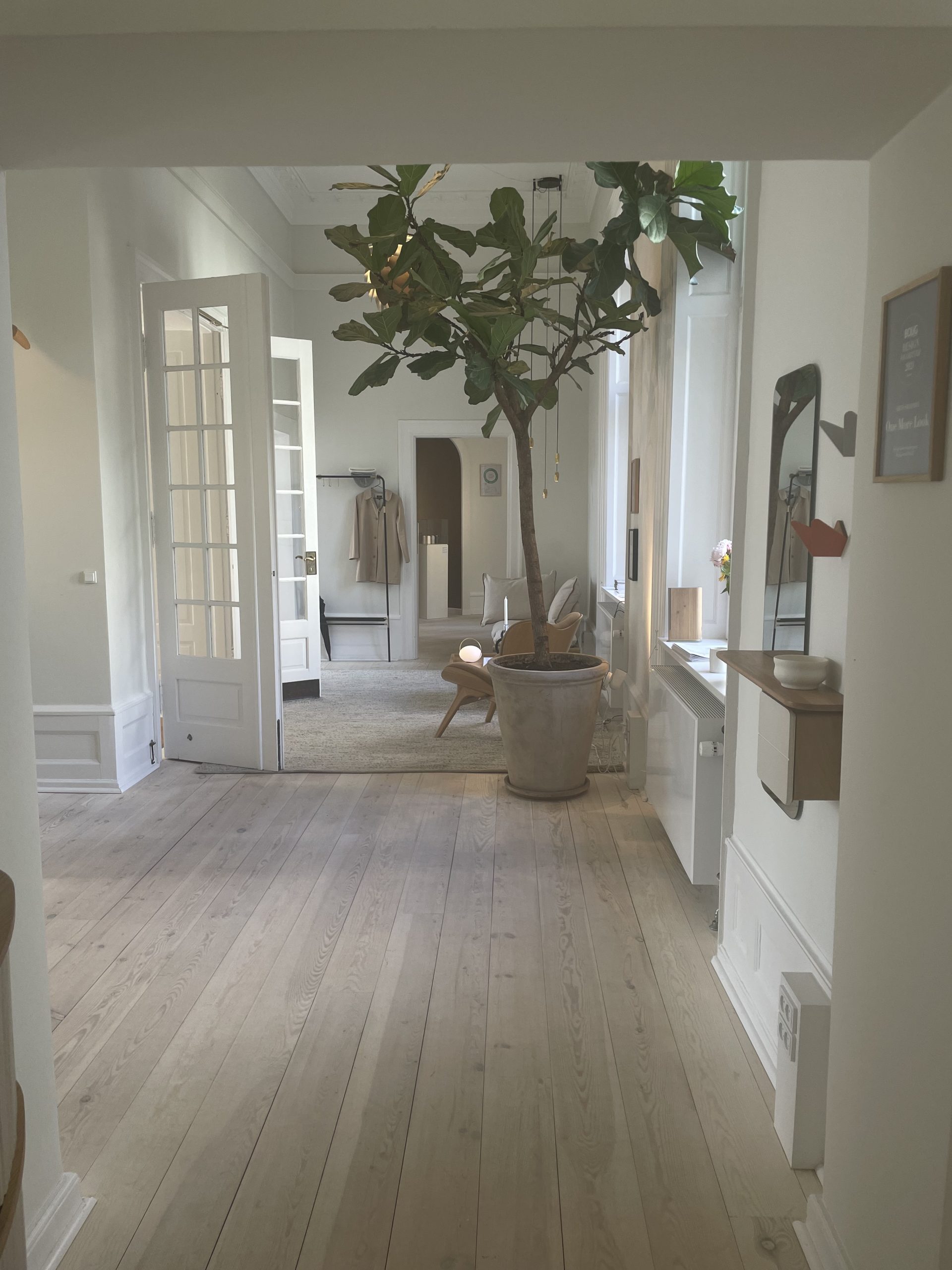
Georg Jensen:
Georg Jensen is iconic in Danish design, and probably one of the most recognized brands in silversmithing. Like many Danes, his work is inspired by nature. You most likely know many of his famous designs, as they are classics and have withstood the test of time: the company was founded in 1904. They have a stand alone store in downtown Copenhagen, but also you see his designs scattered around various showrooms. The Panton tray is a piece I am really excited about. It comes in sterling silver and other less expensive metals, available in two sizes as seen below:
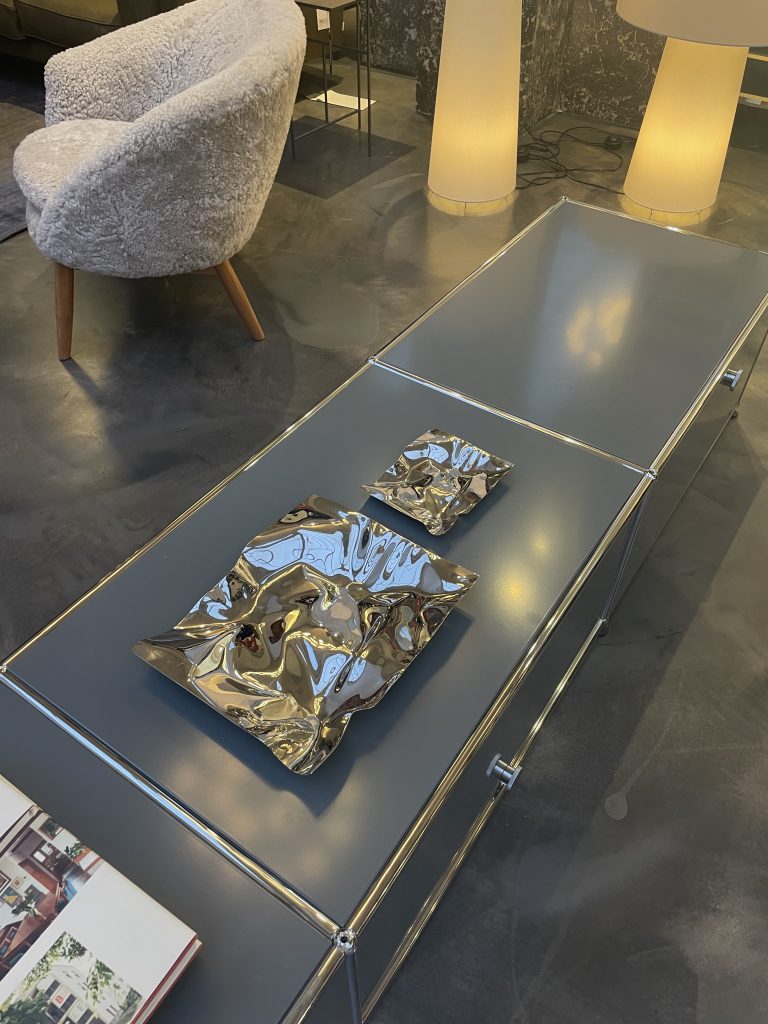
A few well-known Georg Jensen pieces (these images from Pinterest):
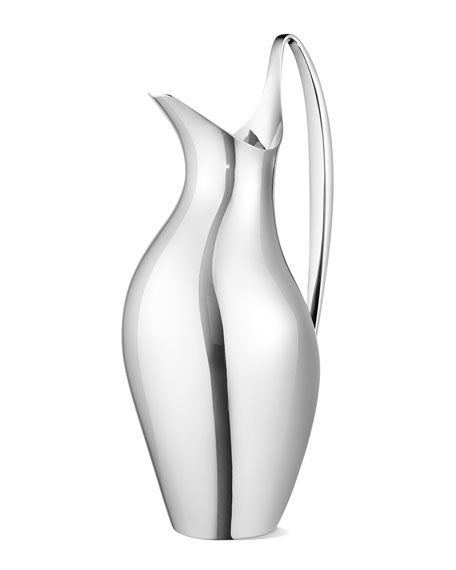
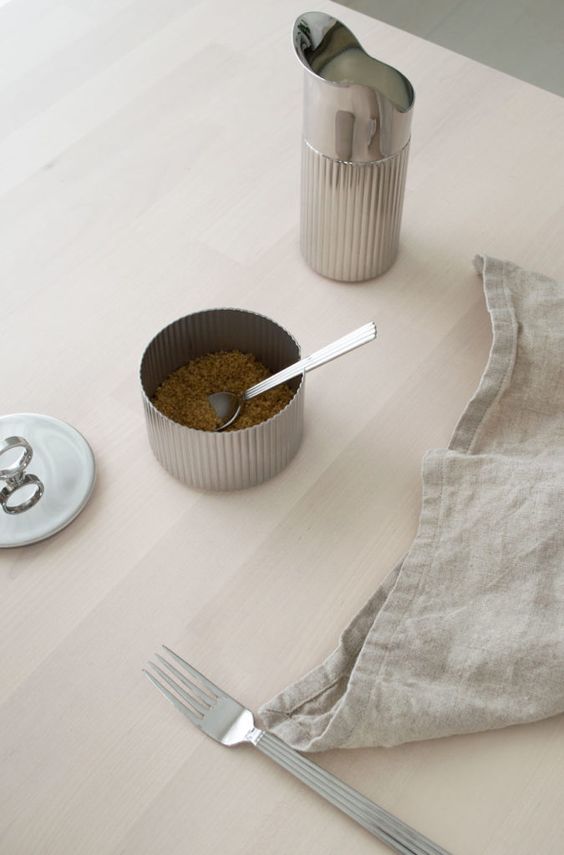
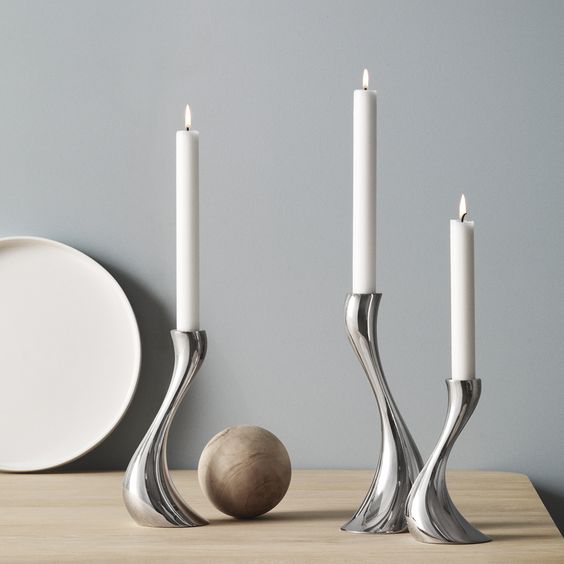
Kvadrat:
You are just going to have to look this one up, as they offer a lot in the way of fabrics, rugs, blinds, acoustic material, upholstery, bedwear and tabletop. Kvadrat means, square in Danish, as in a square of fabric, or the square pattern within their most famous fabric. This company has been around since 1968 and has many notably successful applications in commercial, residential, fashion, etc. They’ve collaborated with famous designers along the way, including Raf Simons. Like most Danish brands, I can say Kvadrat products are of very high quality and environmentally conscious in their designs and productions.
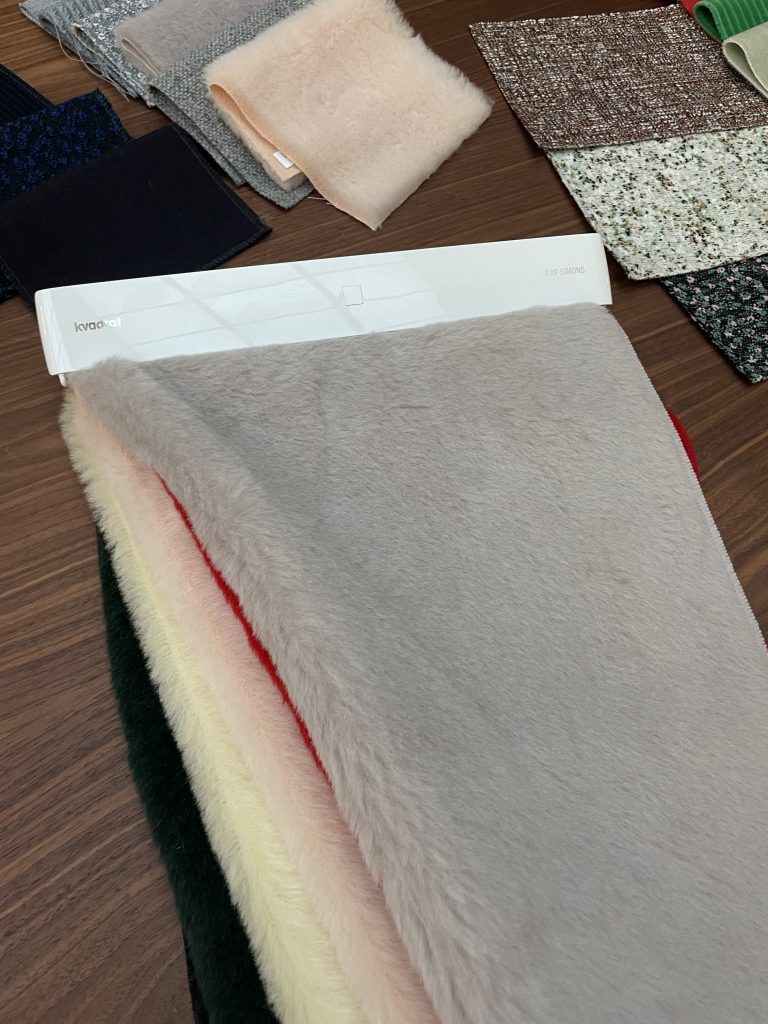
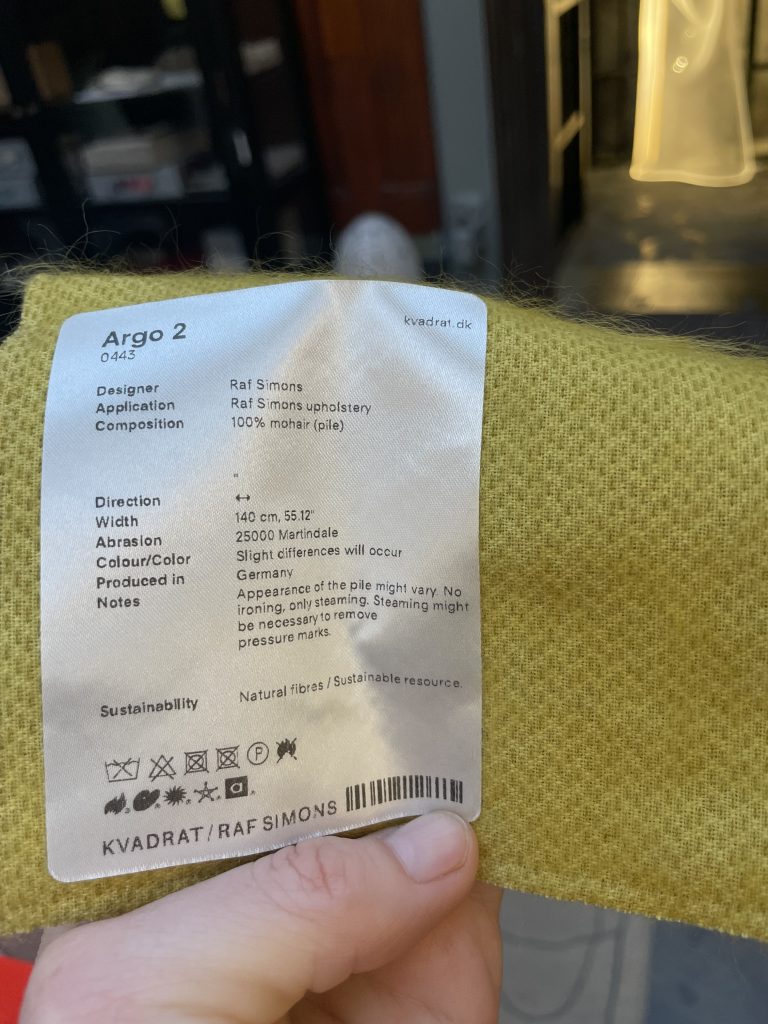
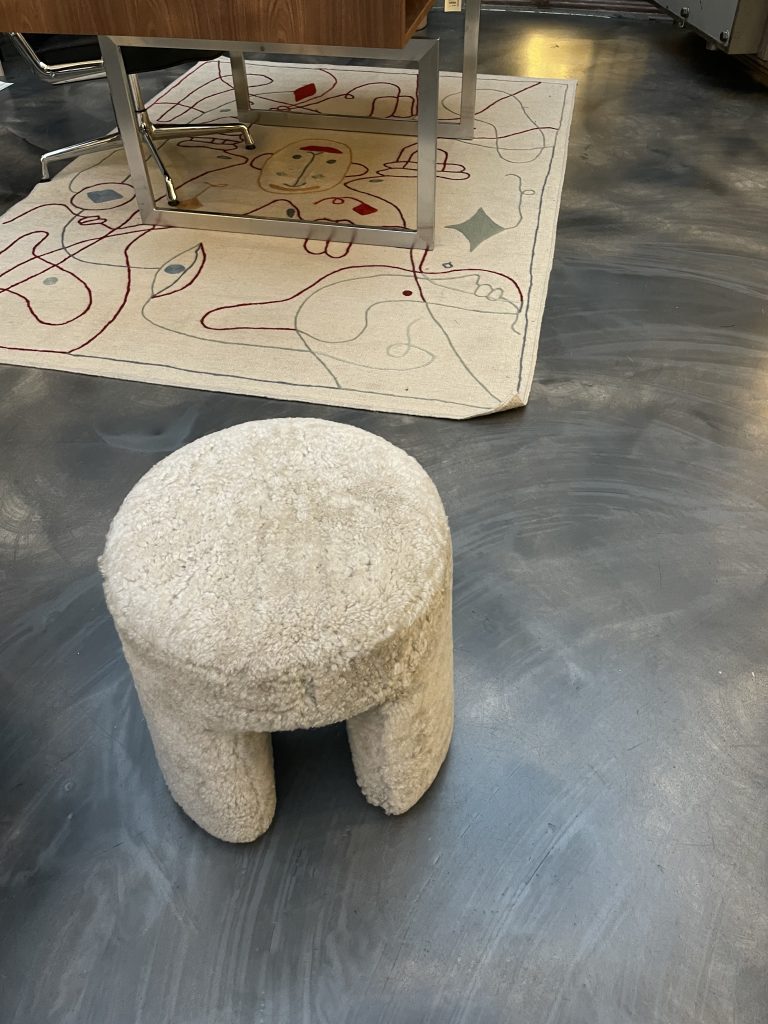
Tom Rossau:
I featured Tom Rossau in my new discoveries at Milan Design Week 2023, and I’m still smitten with his TR-41 lamp. He has a studio in Milan and Copenhagen, where I visited the store and workshop. Light fixtures are made in house by a handful of artisans. They make the forms and sculpt the materials all in house, by hand with raw woods, bending them and shaping them, binding pieces of wood together, then drying them and stretching them out… It is an amazing and compelling process. Their new introduction during 3 days of design Copenhagen was hand-painting the TR-41.
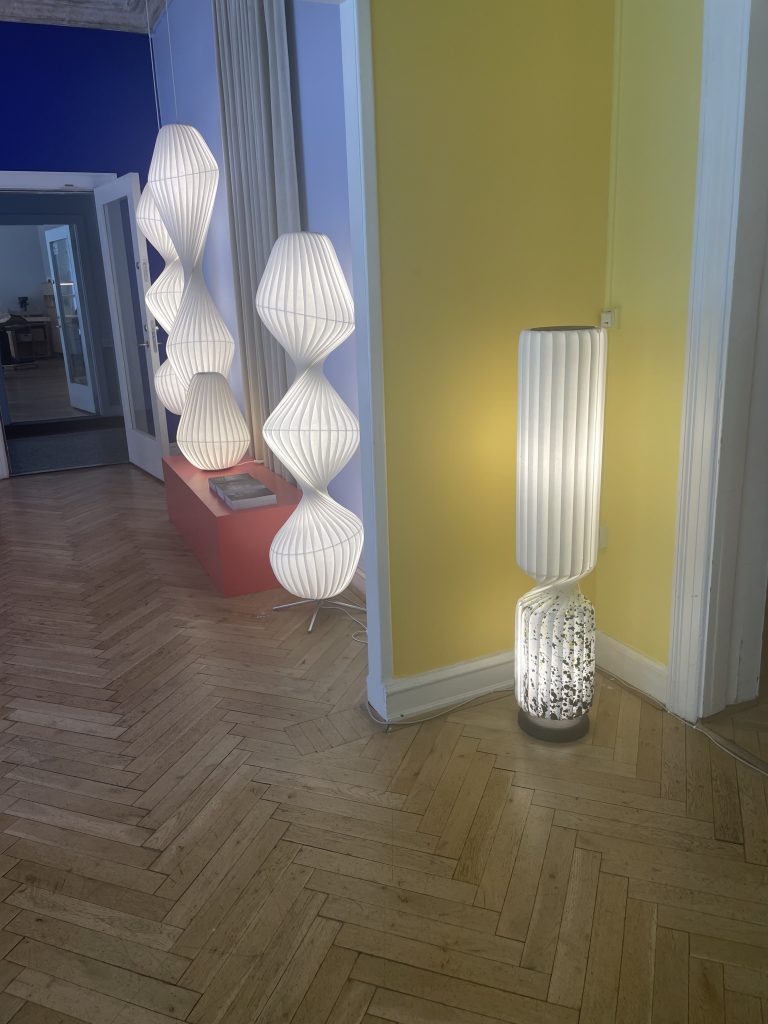
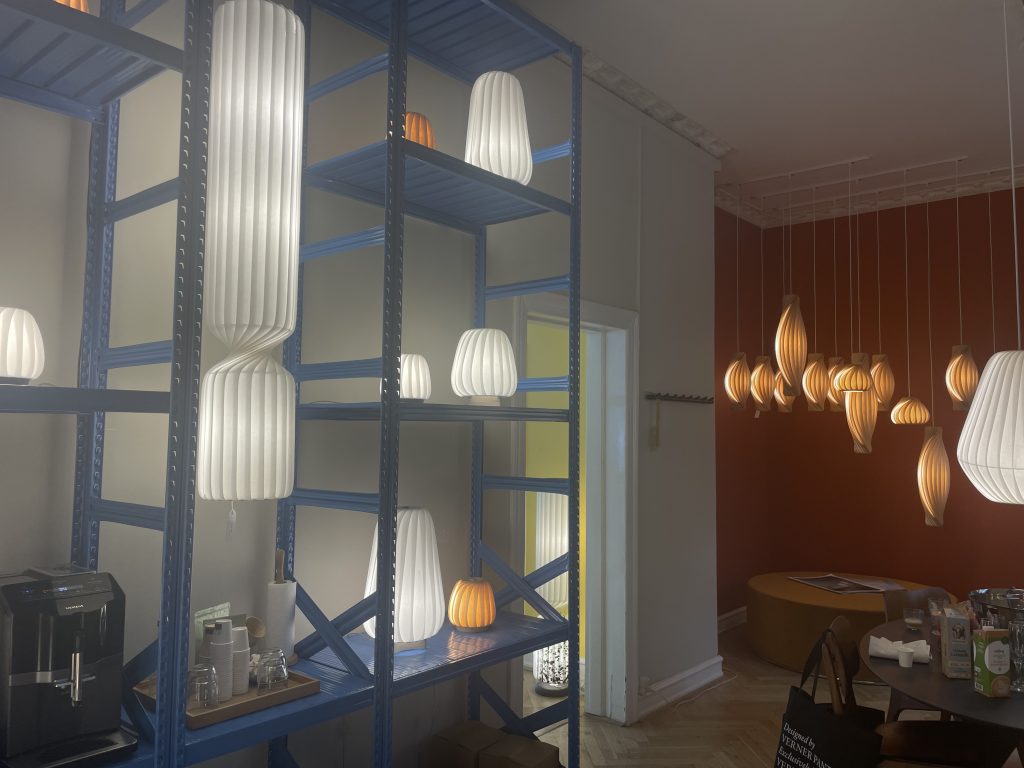
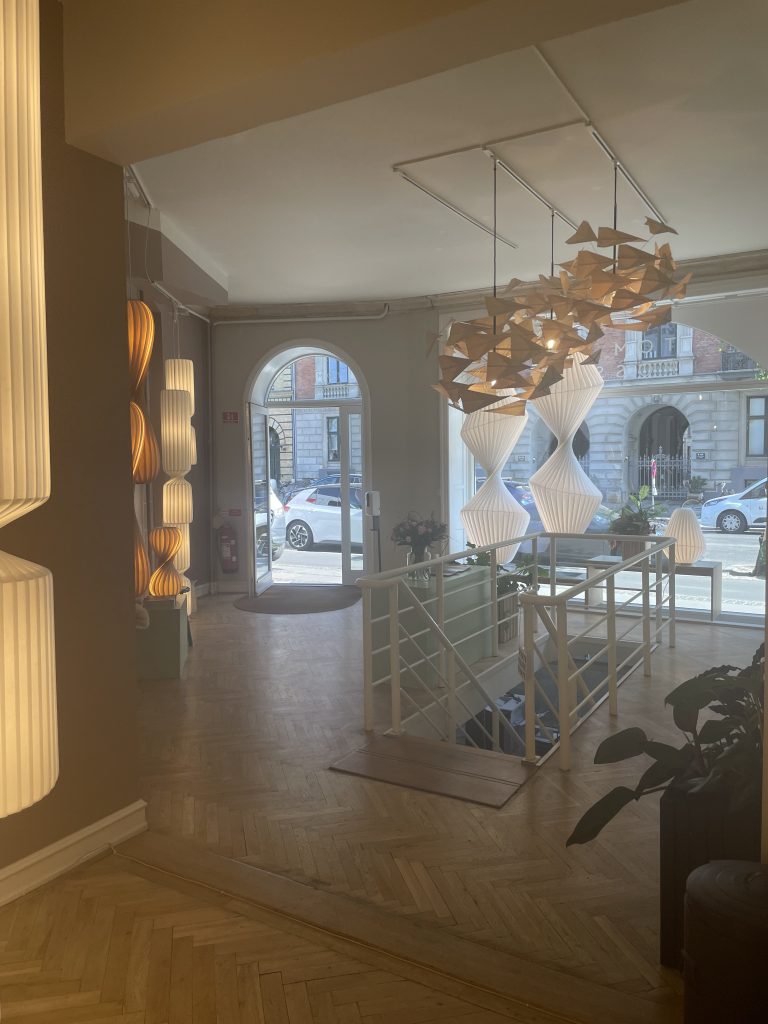
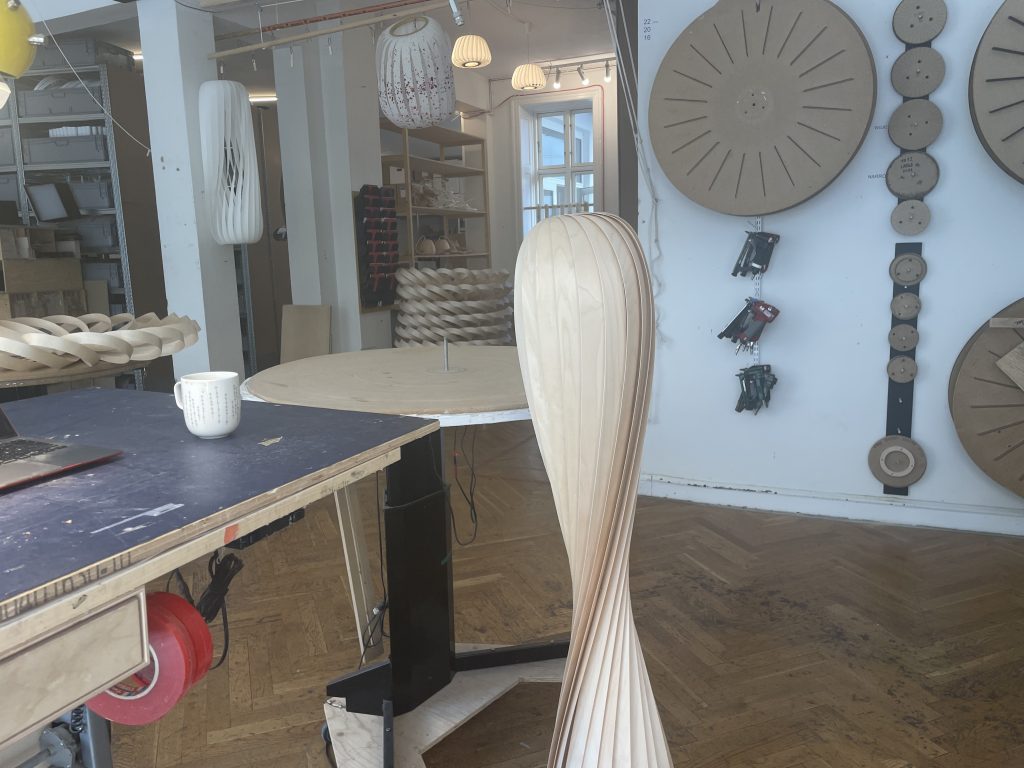
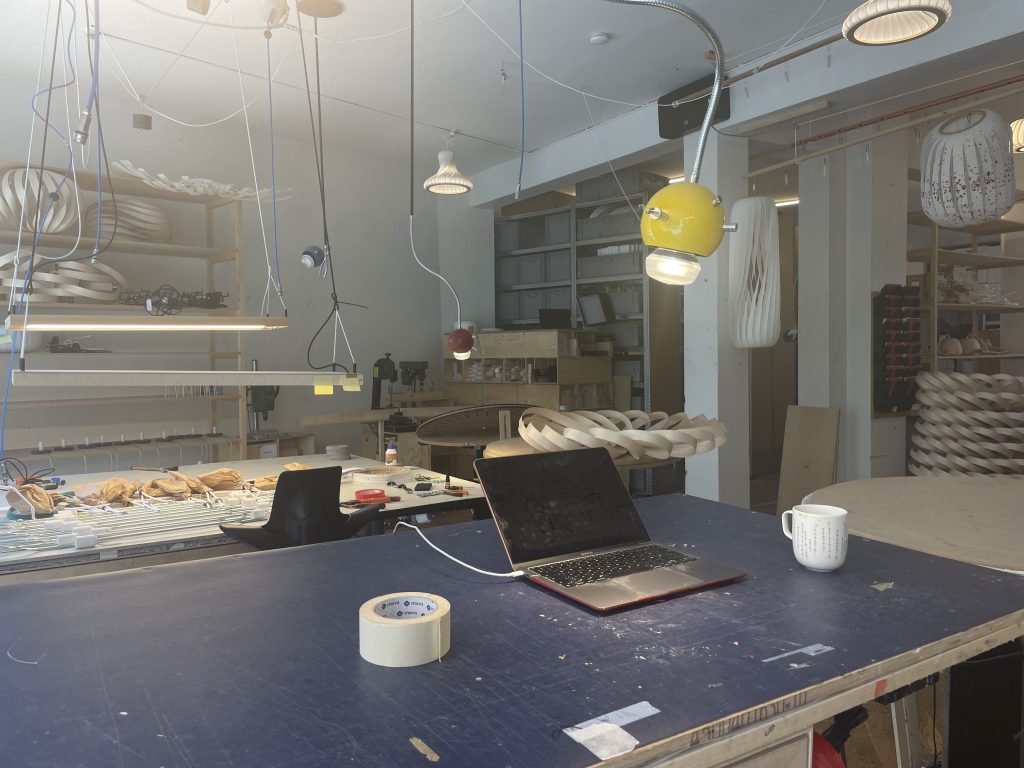
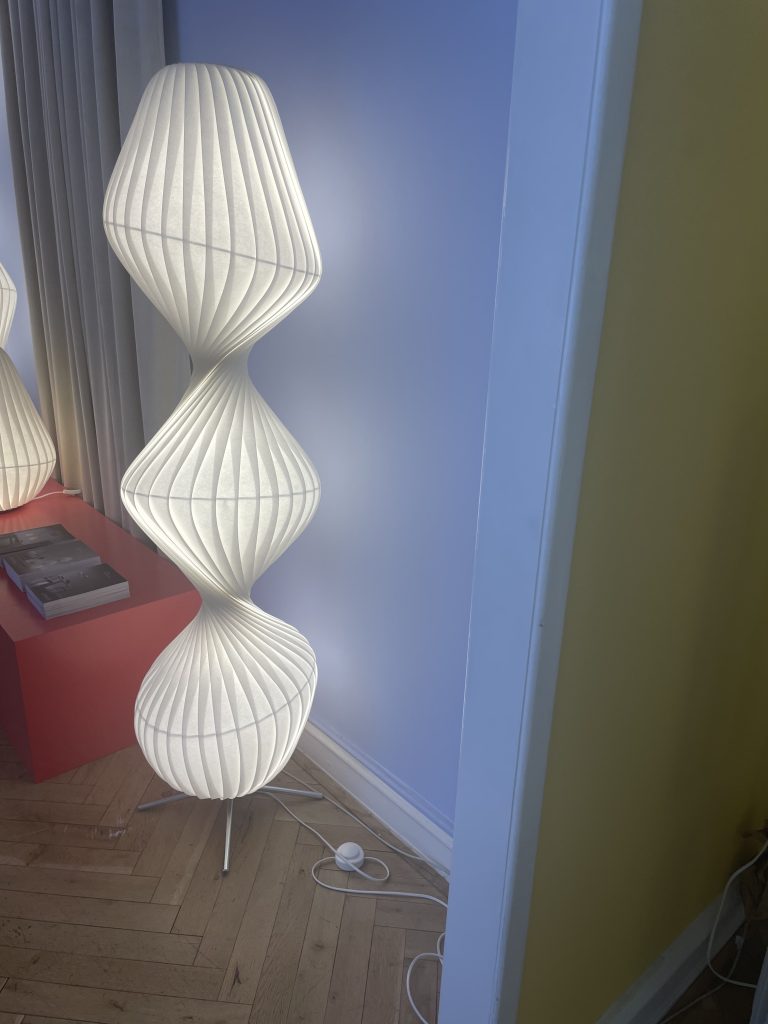
Fredericia Furniture:
I was told to visit the Fredericia Furniture showroom by a sales associate at Tom Rossau. It did not disappoint! In the heart of Copenhagen, you enter a historic building and either take the small lift, or climb four flights of stairs to the Fredericia showroom. (They occupy the 4th & 5th floors of the building and have incredible views of the city from the showroom and the terrace). Their space is incredibly beautiful, and feels a bit like a private apartment, as most of the furnishings are placed in a grouping to create rooms within the showroom. This is a great way to showcase your products, as clients can really visualize how they would use the pieces in their own homes.
Since their creation in 1911, Fredericia has established itself with a reputation for quality. Over the years, they’ve stayed current with designer collaborations, and classic pieces that are still available today. Below you see examples of their furniture and aesthetic: Natural materials, tone on tone, beautiful yet functional pieces.
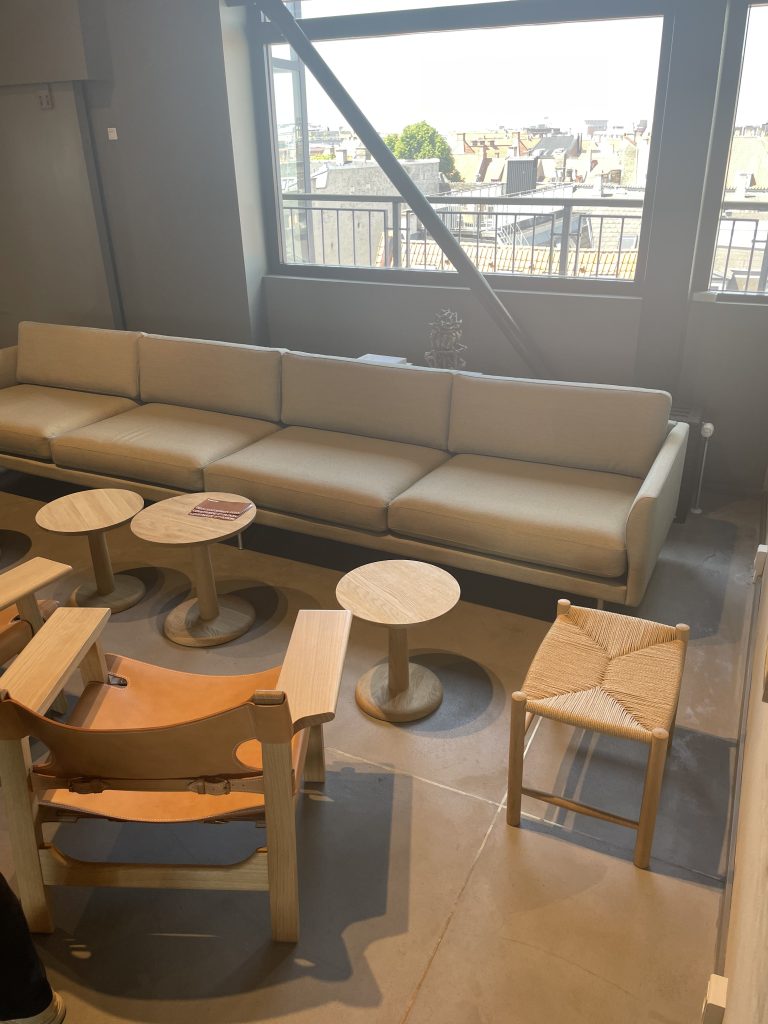
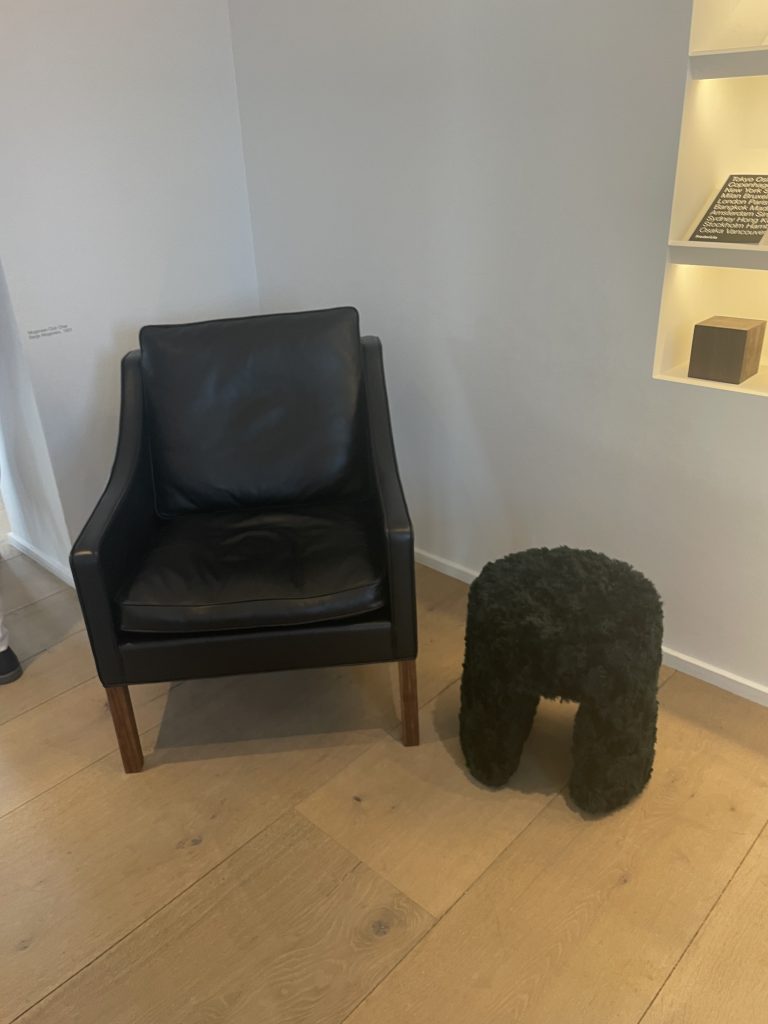
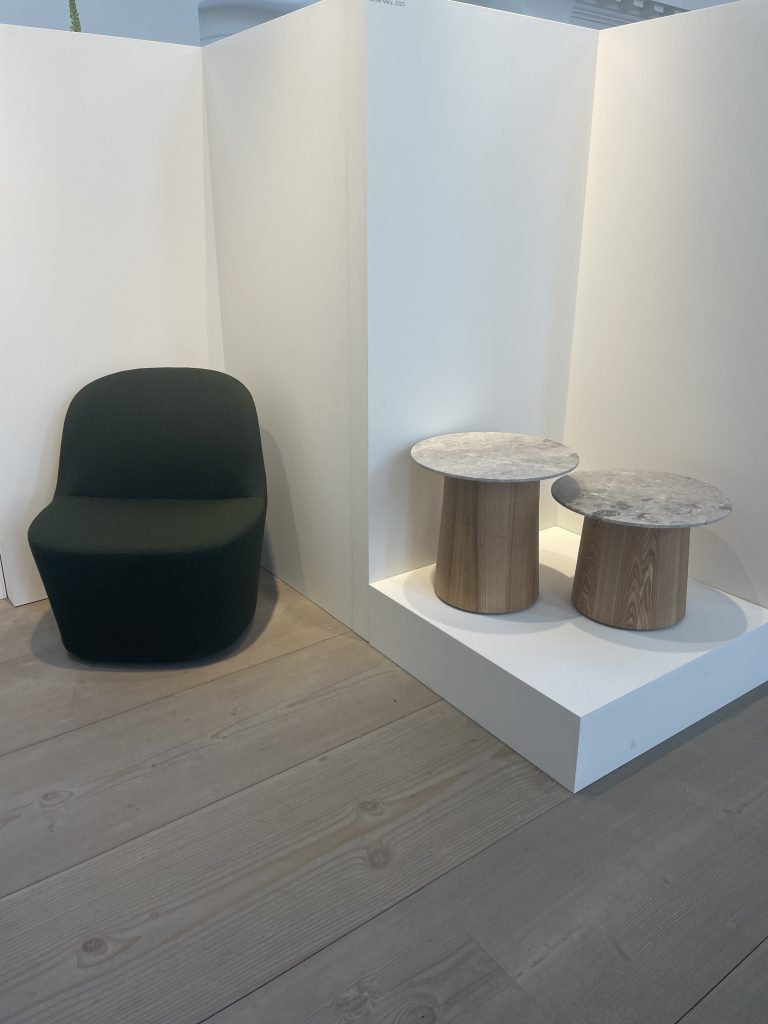
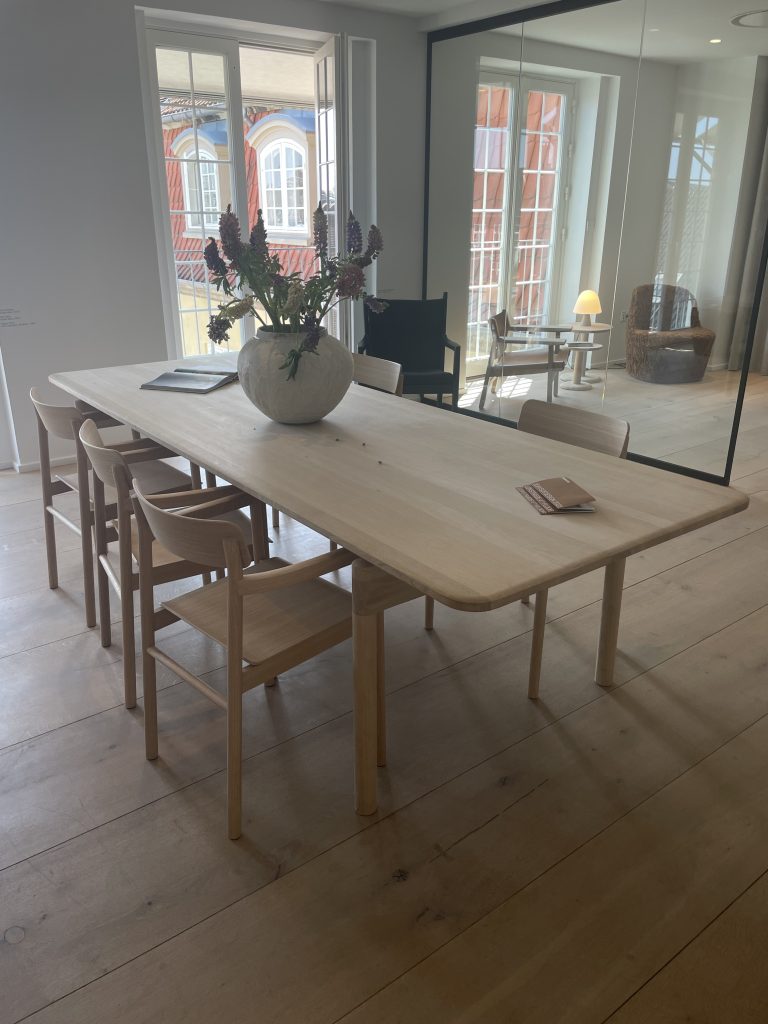
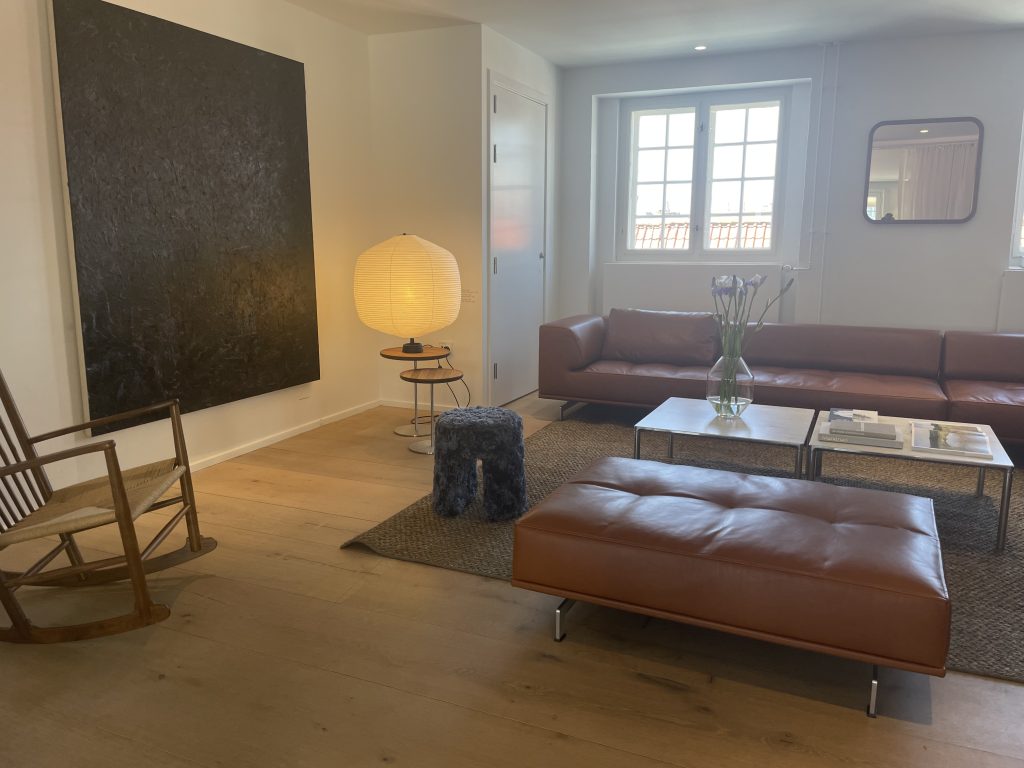
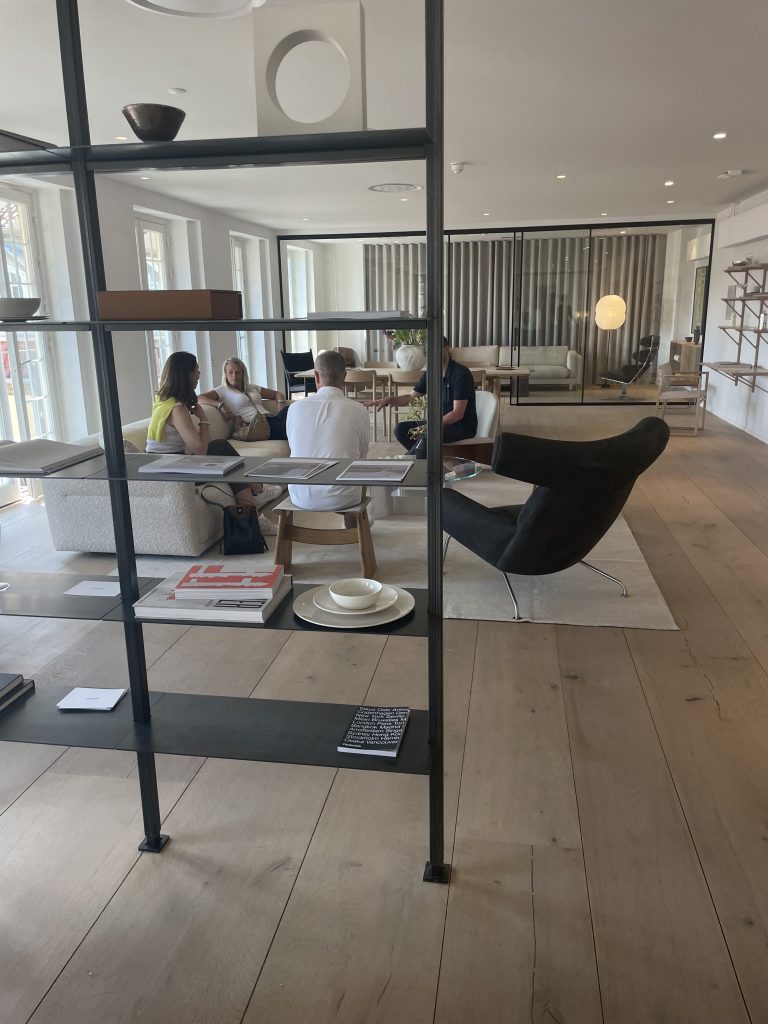
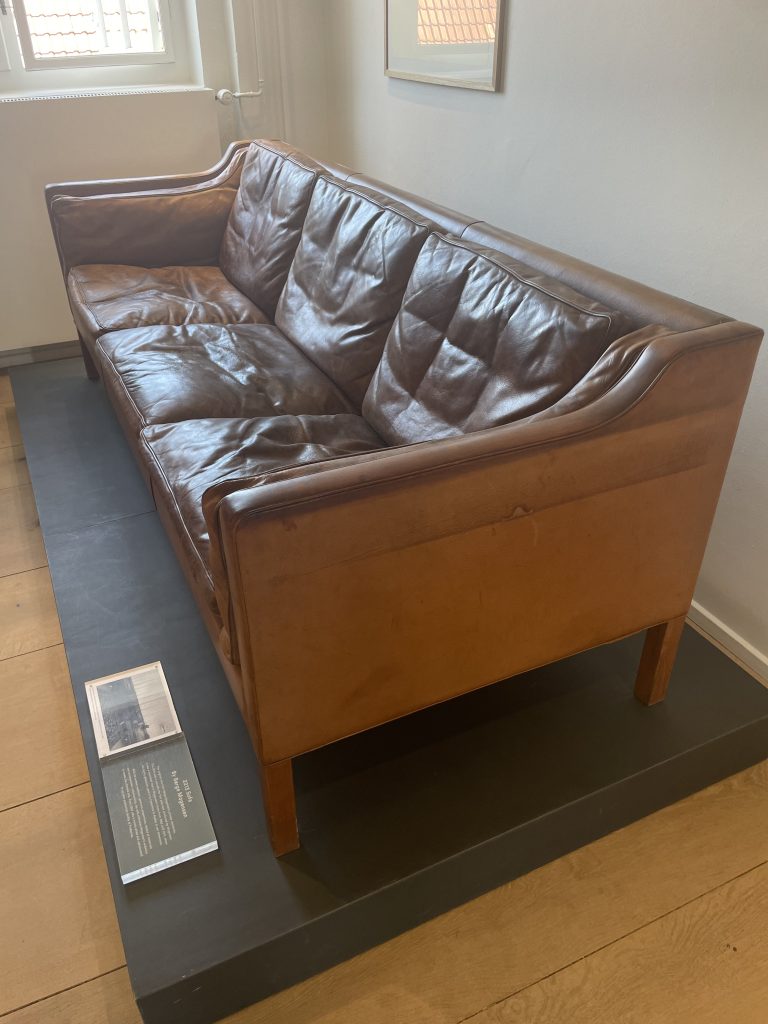
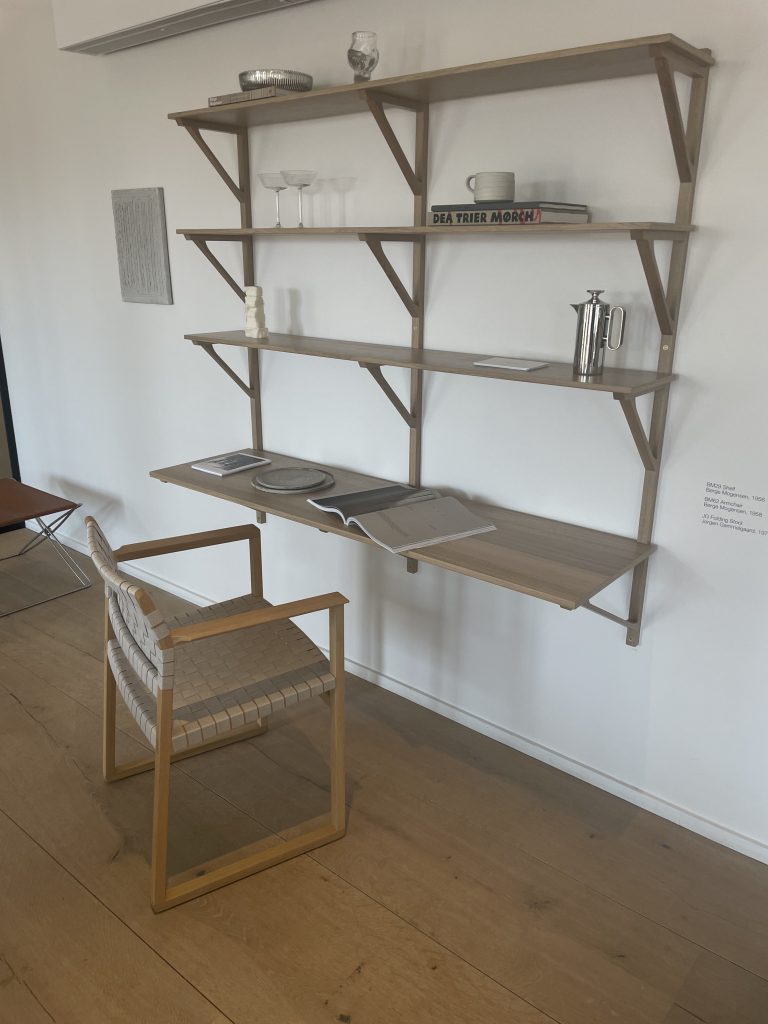
Audo: (formerly Menu):
I love most everything Audo is creating right now. They have a really enticing vibe, with their marble plinths and application of natural materials in their casegoods, and a recent collaboration with American stylist, Colin King, who was in attendance at Audo for a talk and book signing. I purchased the stance vase by Colin King, and find it is a great vase to have, as any flower or branch looks impactful in it, and it adds height where you need it. Even the vase on its own is sculptural. I also have one of their Audo’s plinths, and would love to add more to my home. They look amazing when layered with other marble pieces, or in a corner, as shown in the images below.
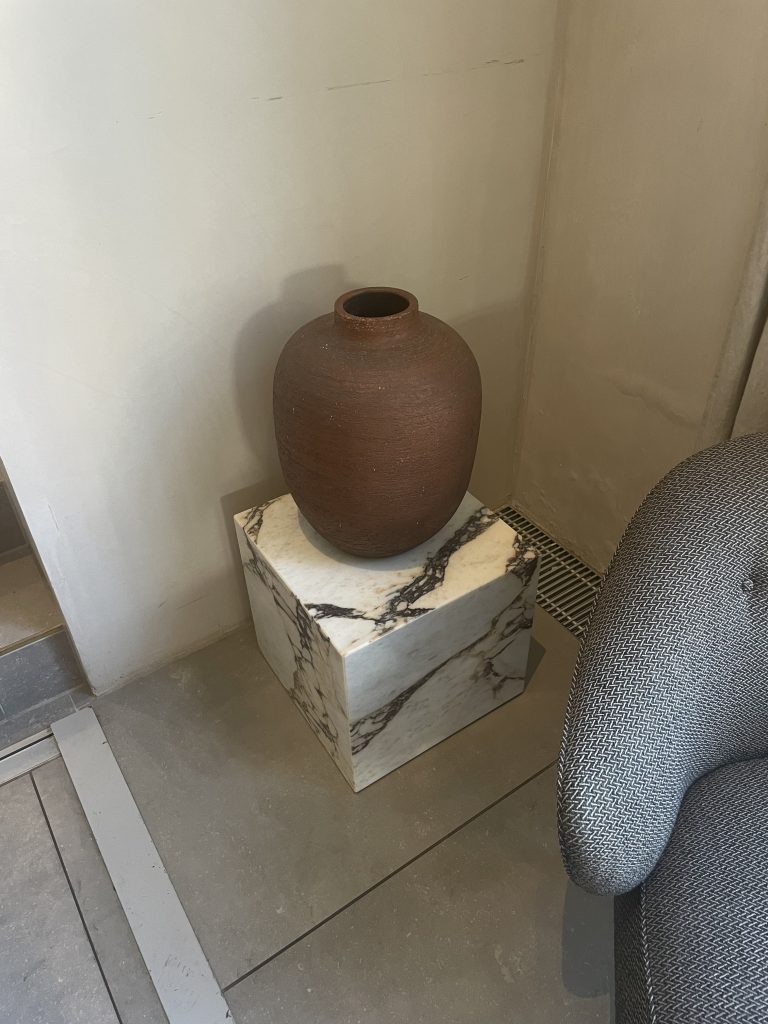
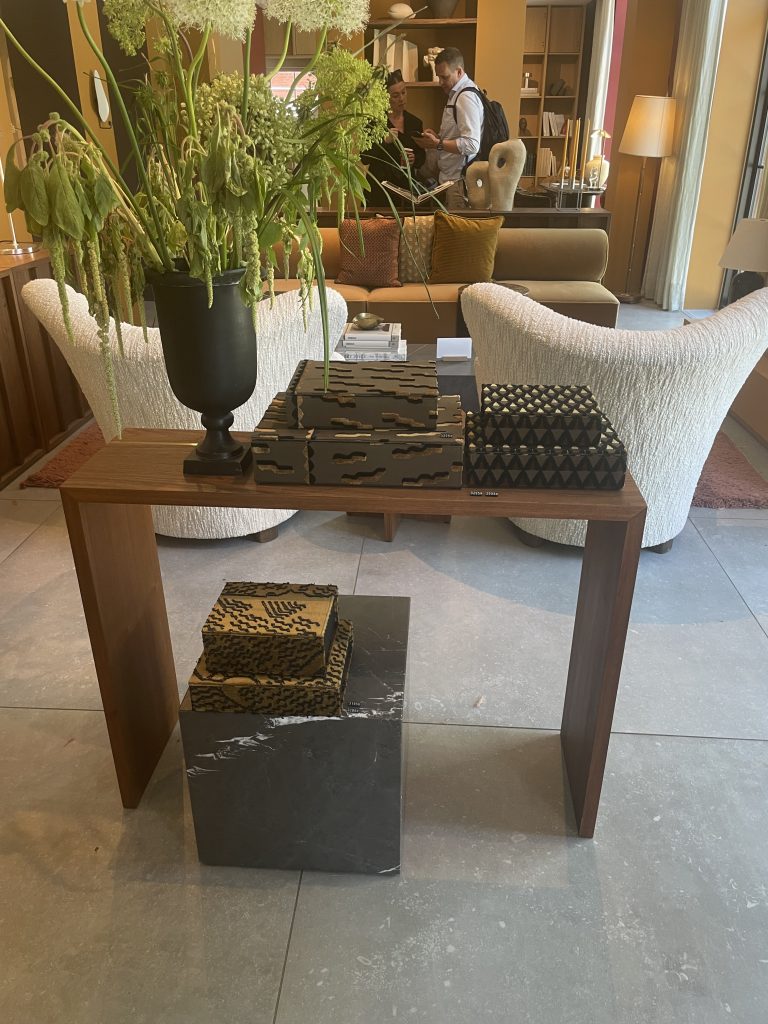
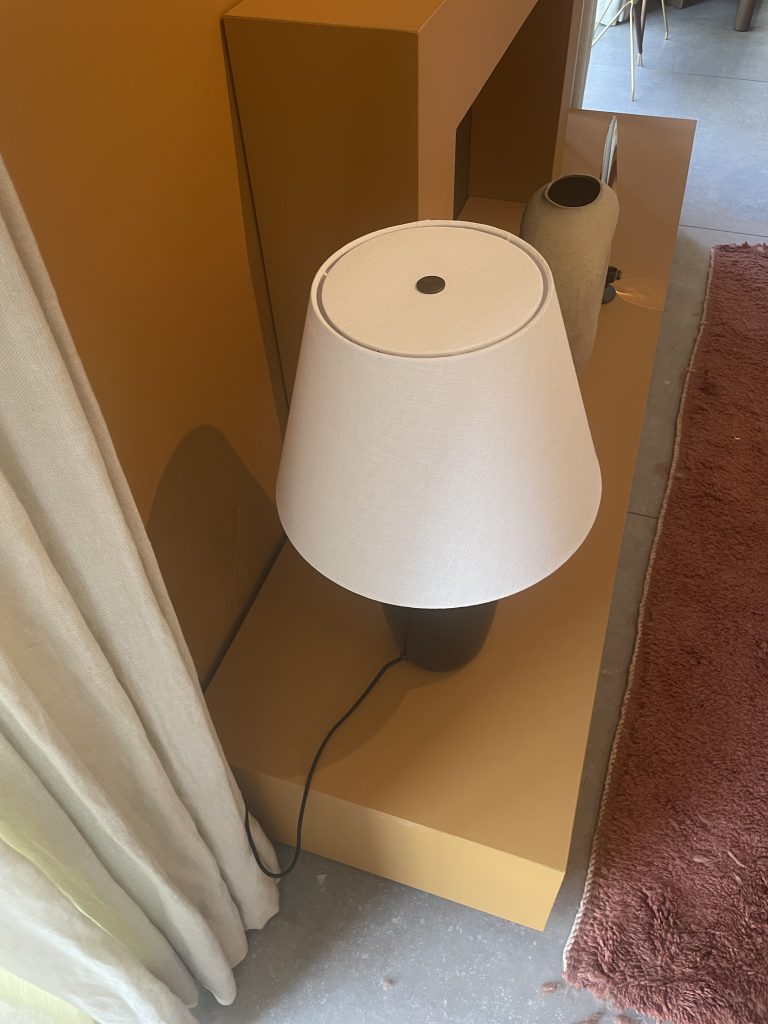
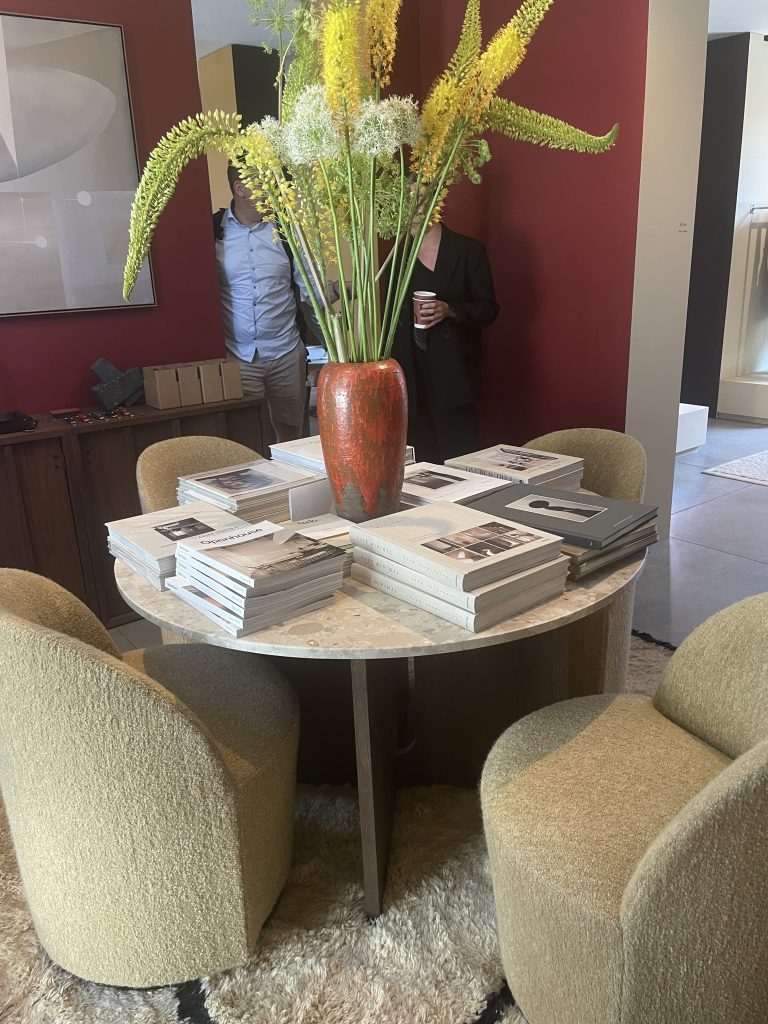
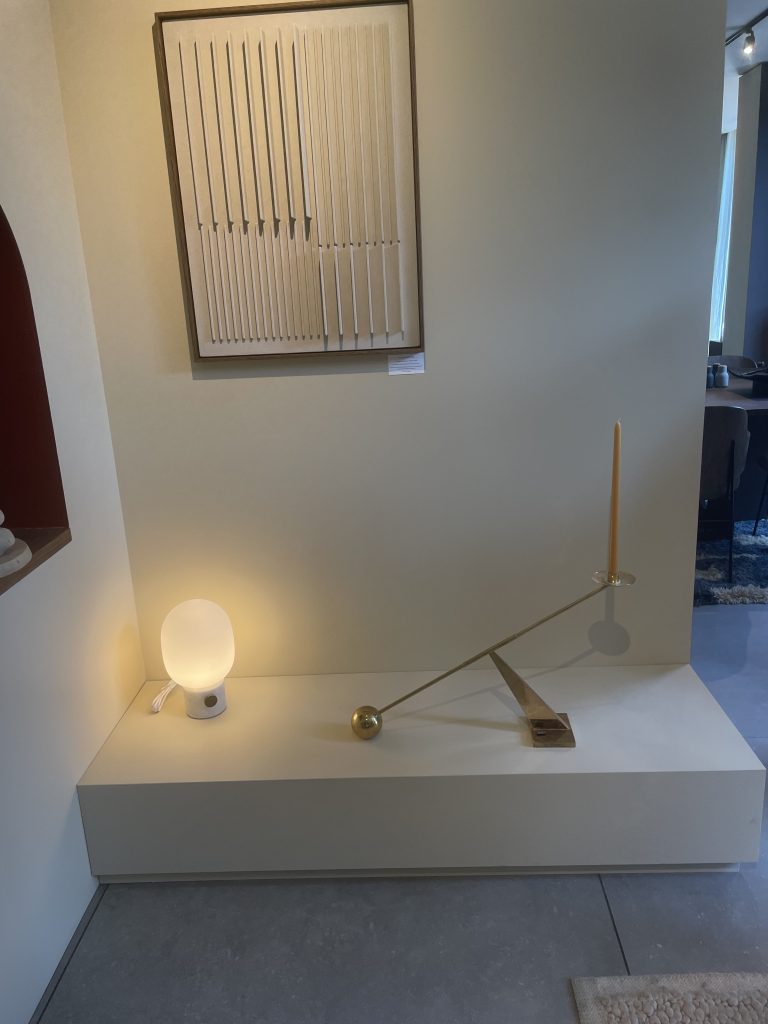

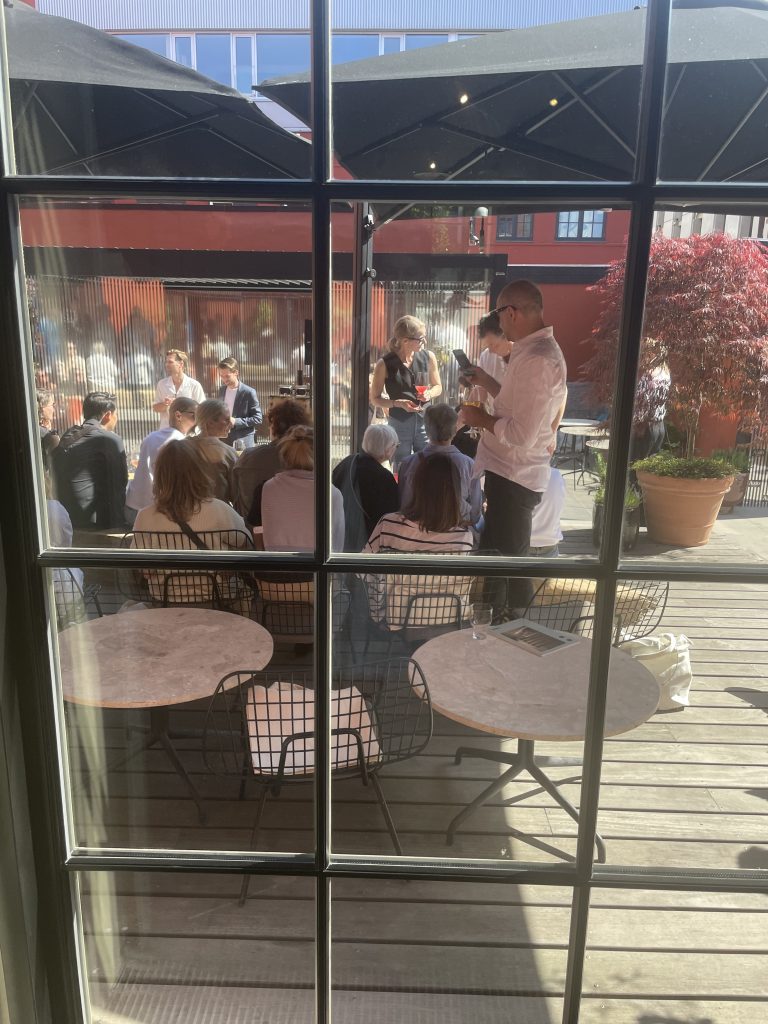
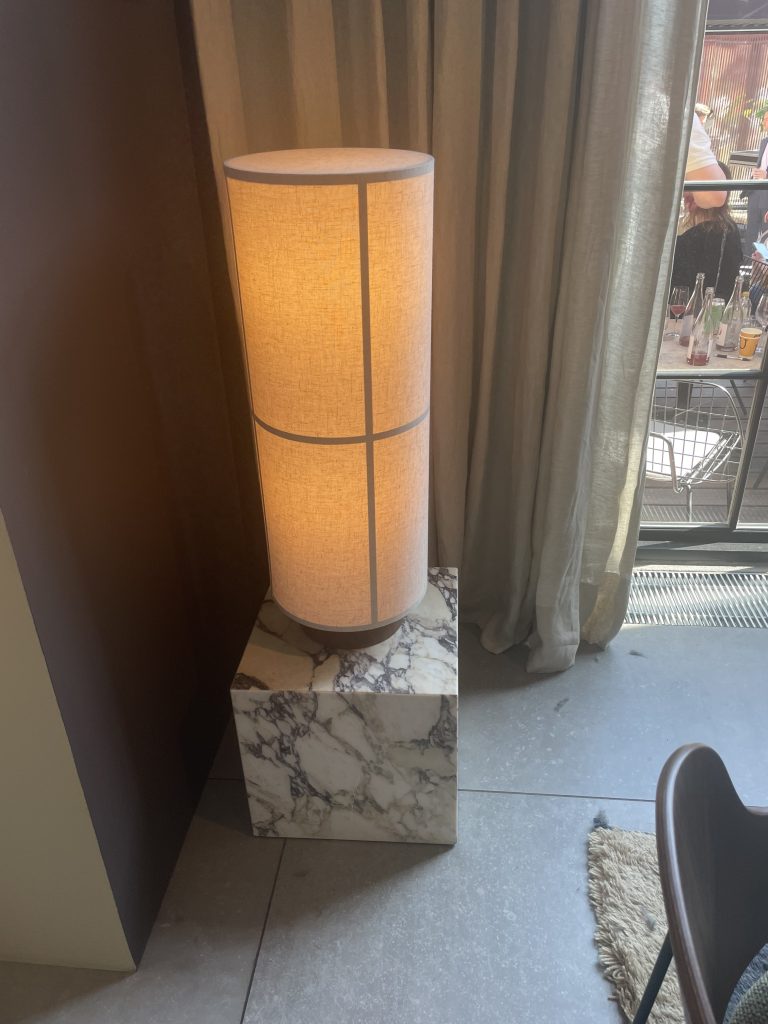
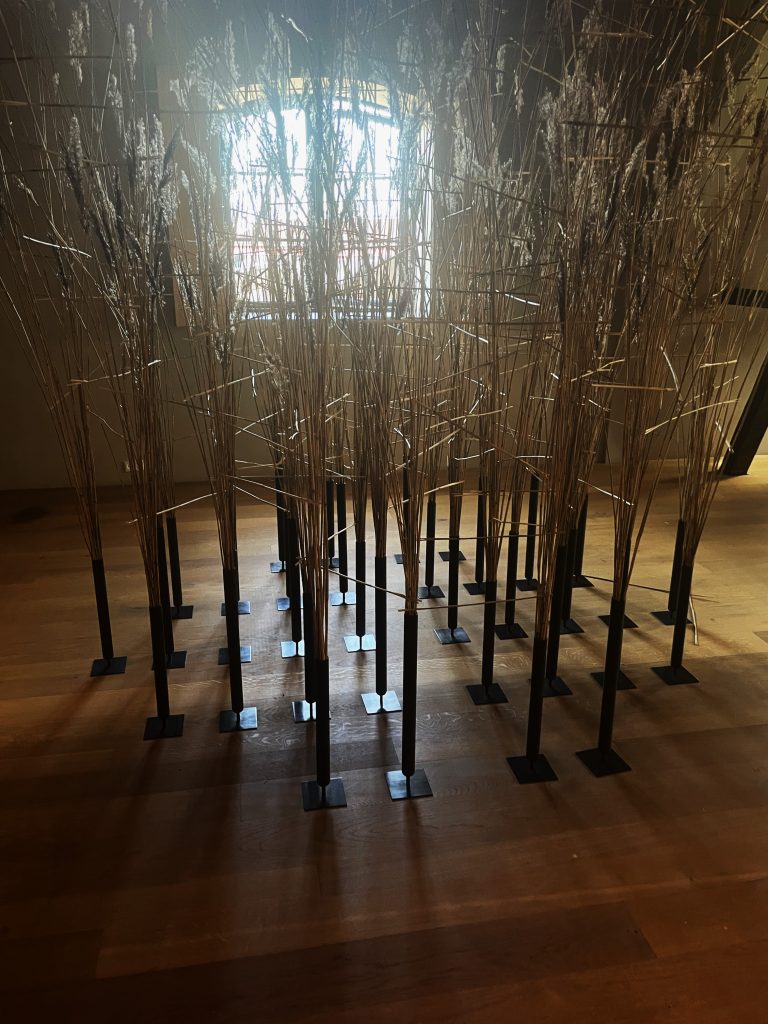
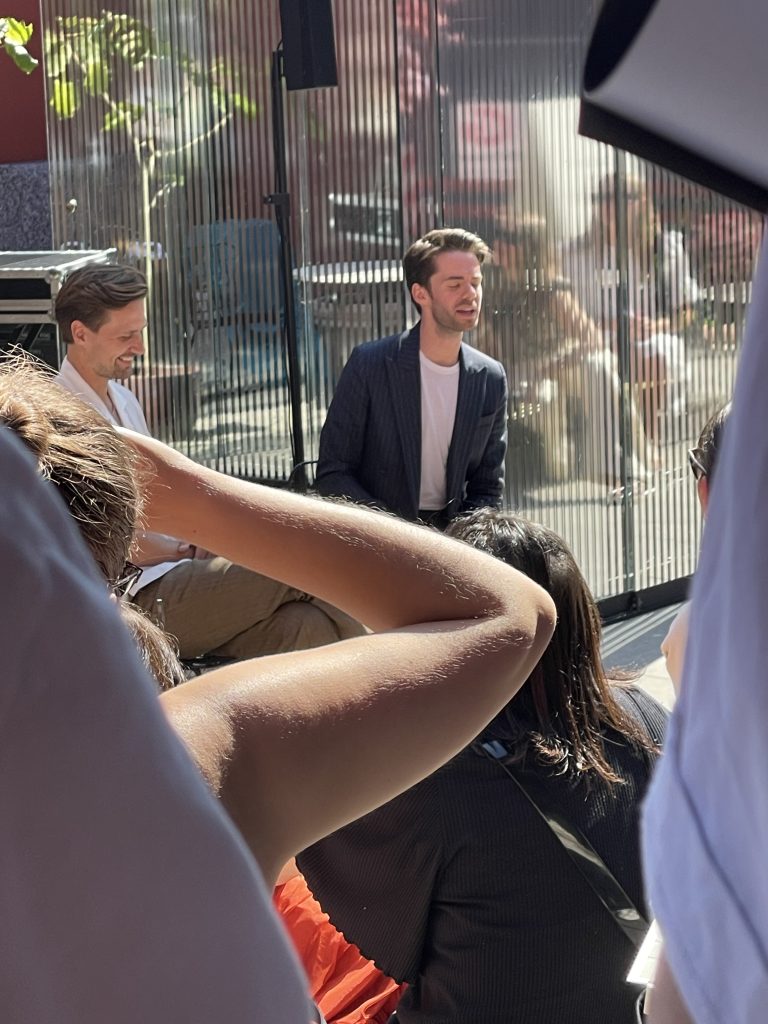
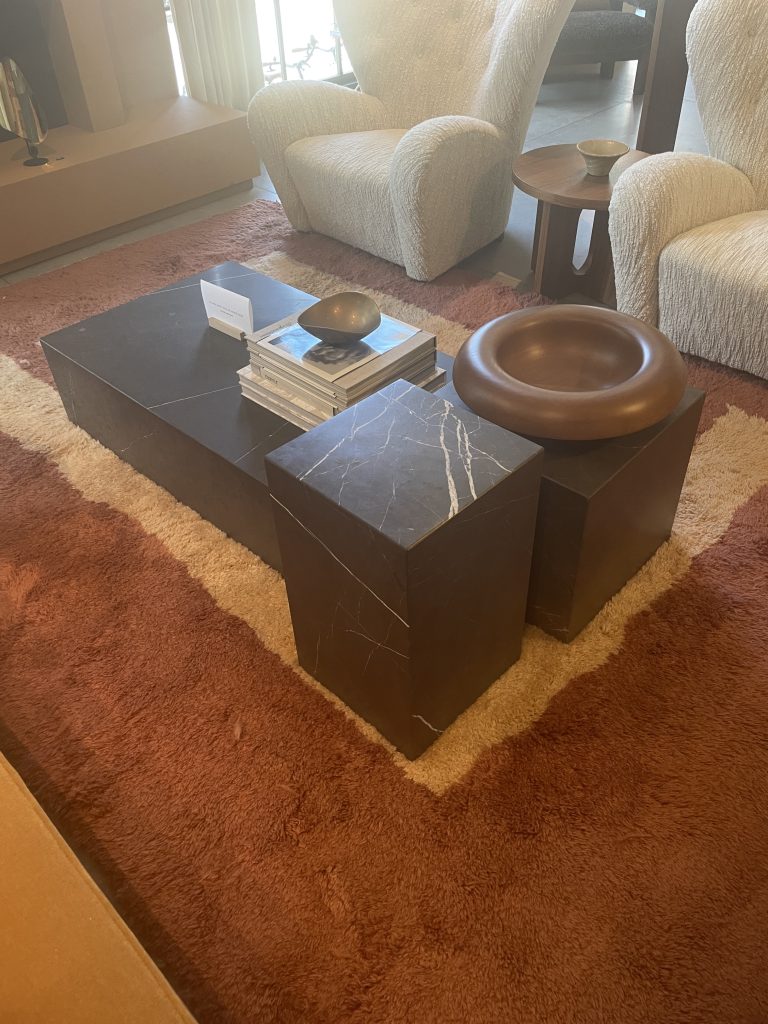
Paustian Mobler:
Paustian is a gallery-like space in an old bank building in the heart of Copenhagen, representing many different brands in one showroom. This can be helpful to see how furniture from different manufacturers interact together, and how they scale together. This is a smaller showroom, but they pack a lot of interest into the floor space. Below are some of the highlights:
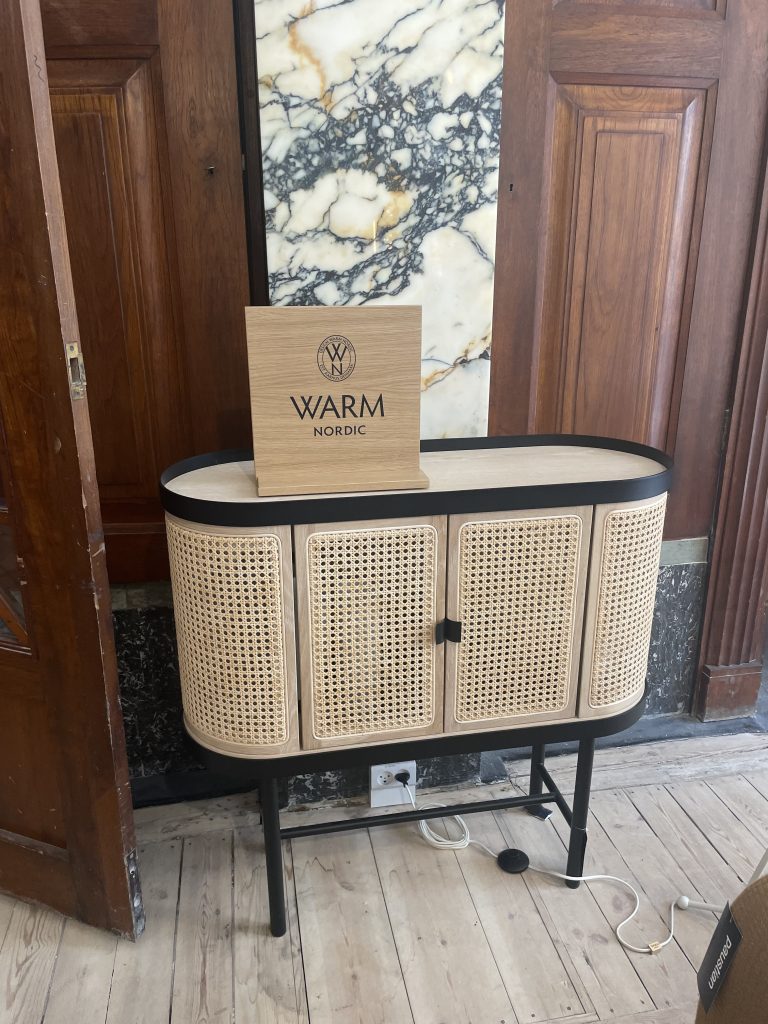
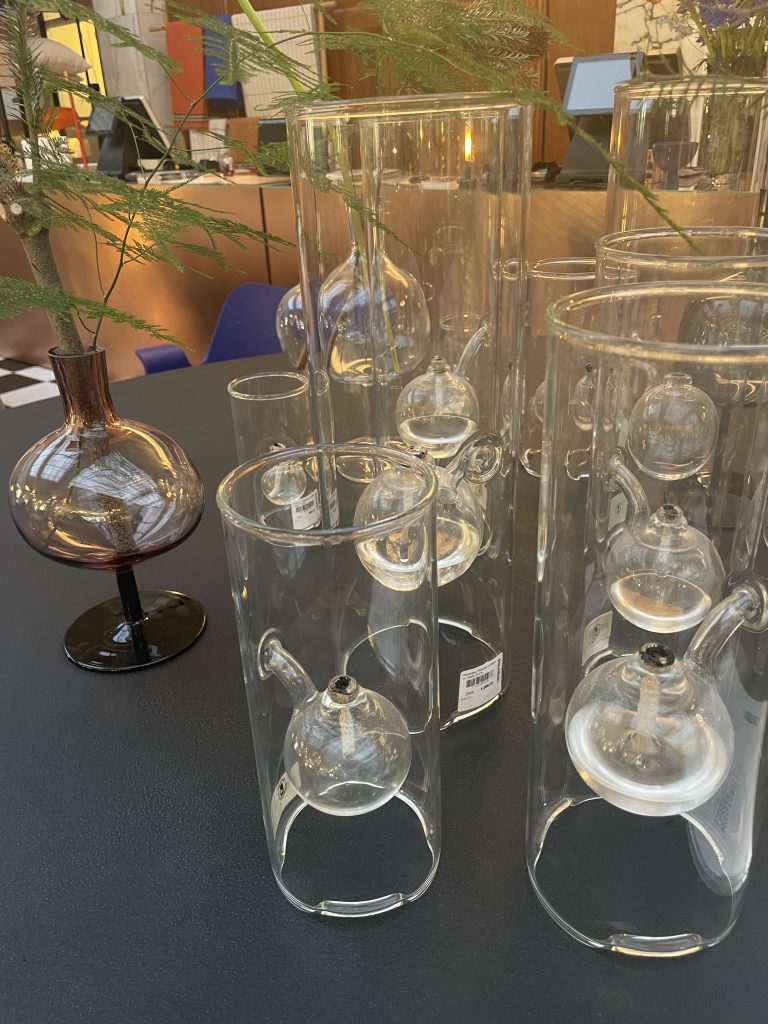
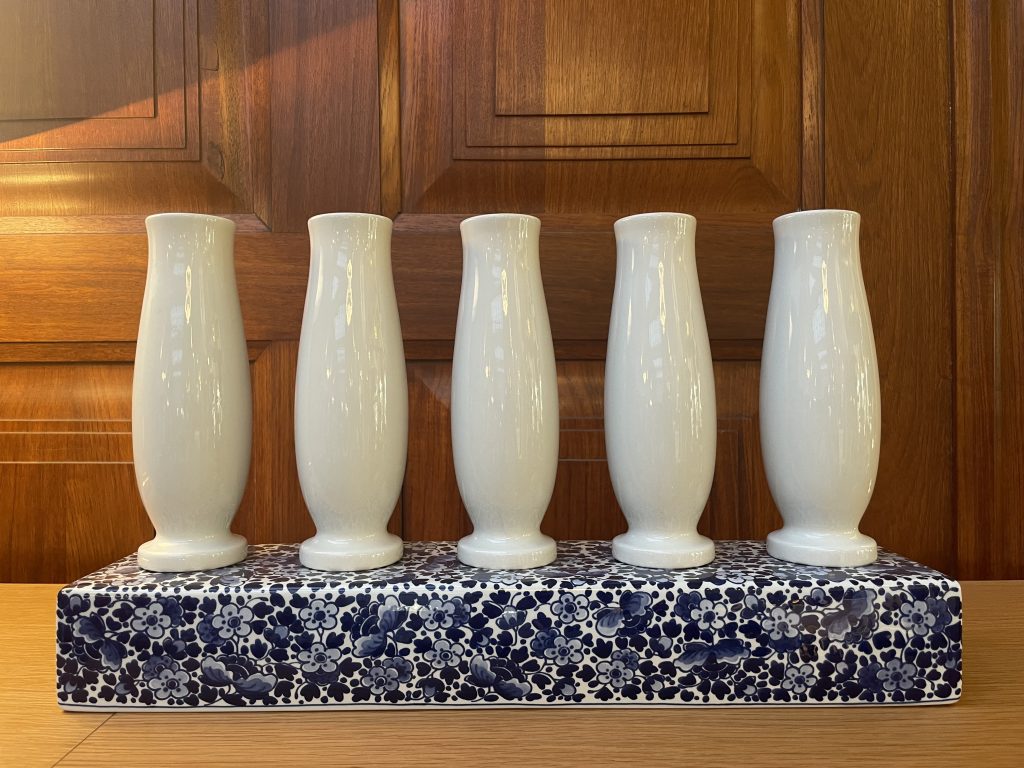
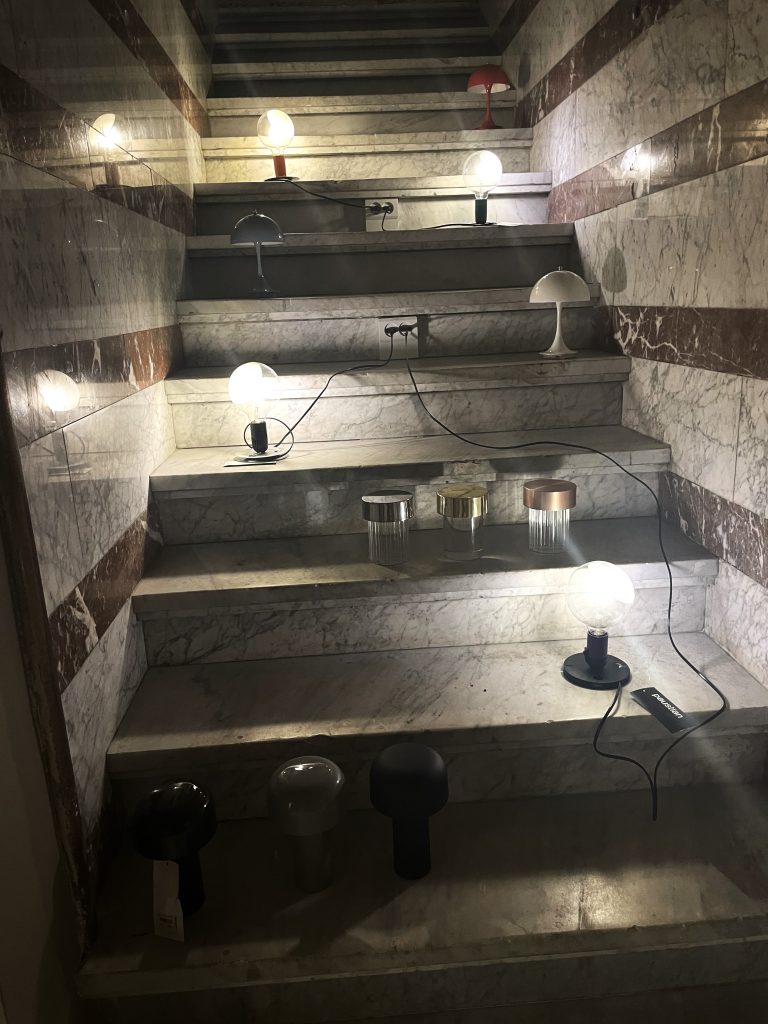
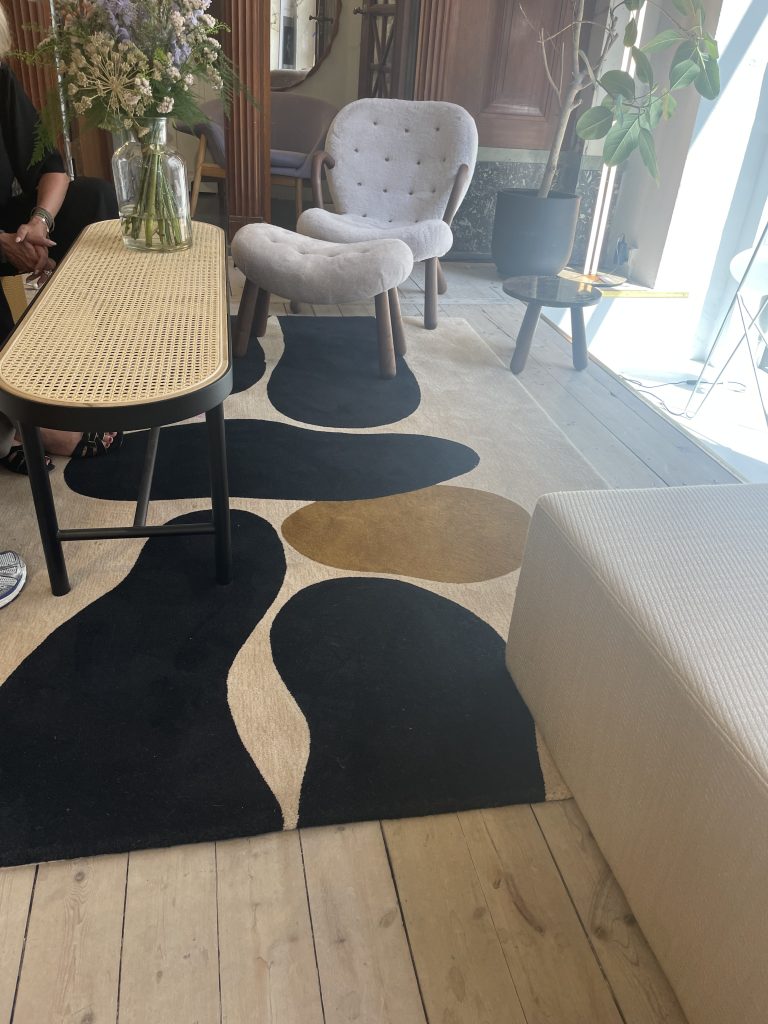
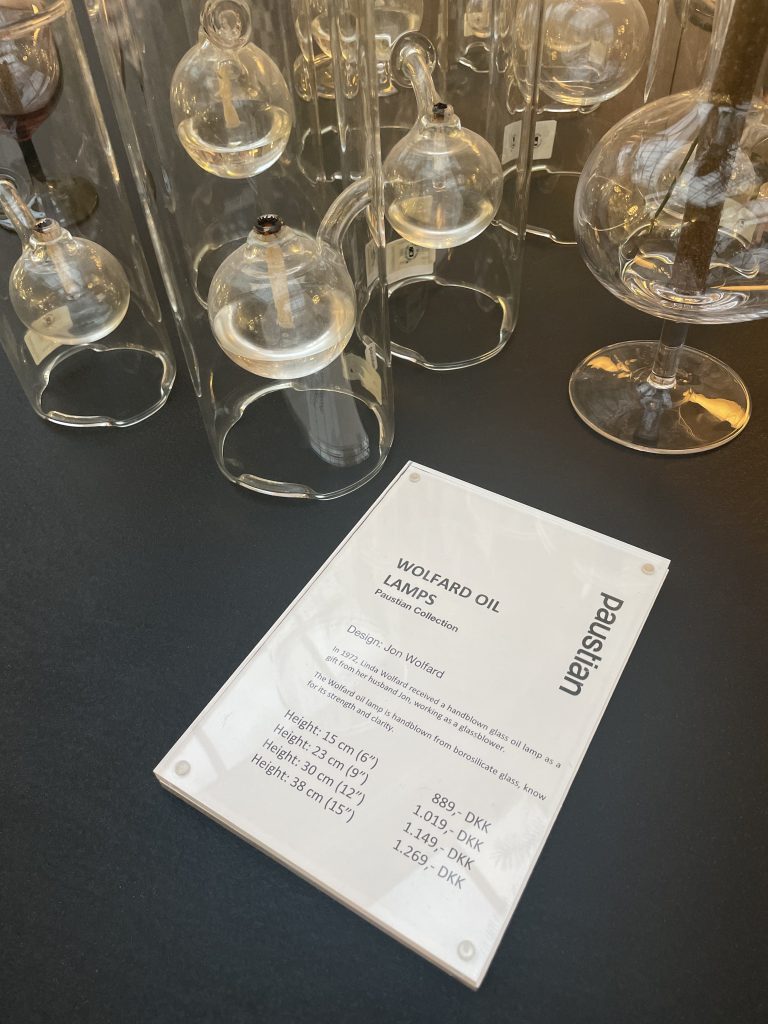
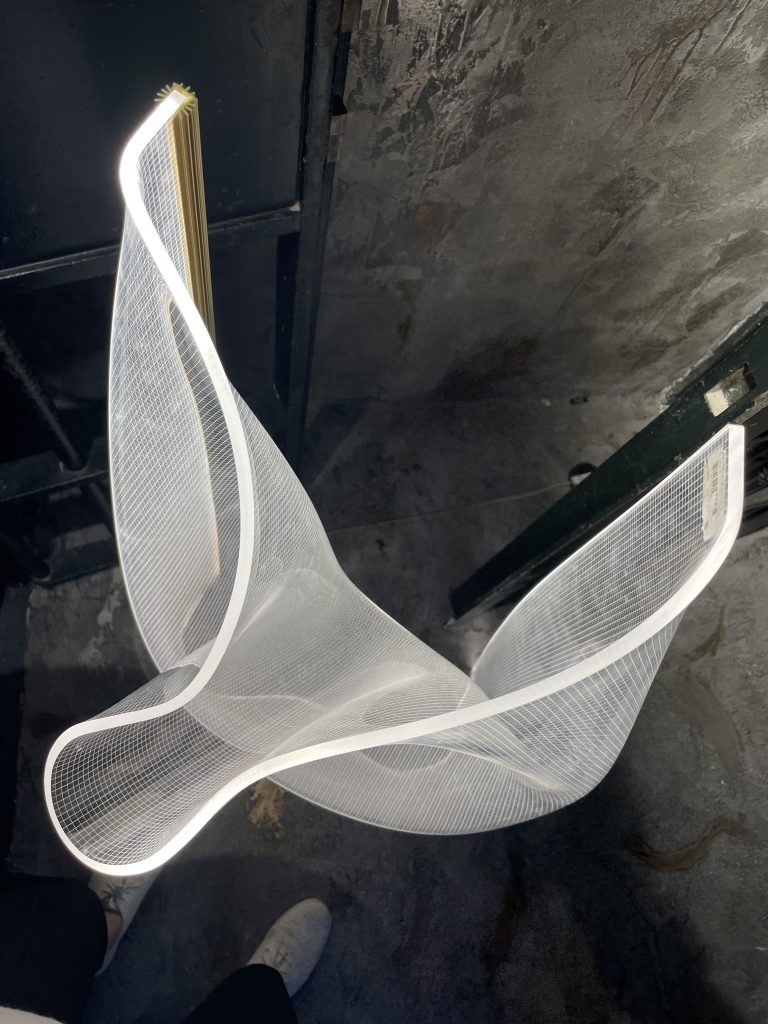
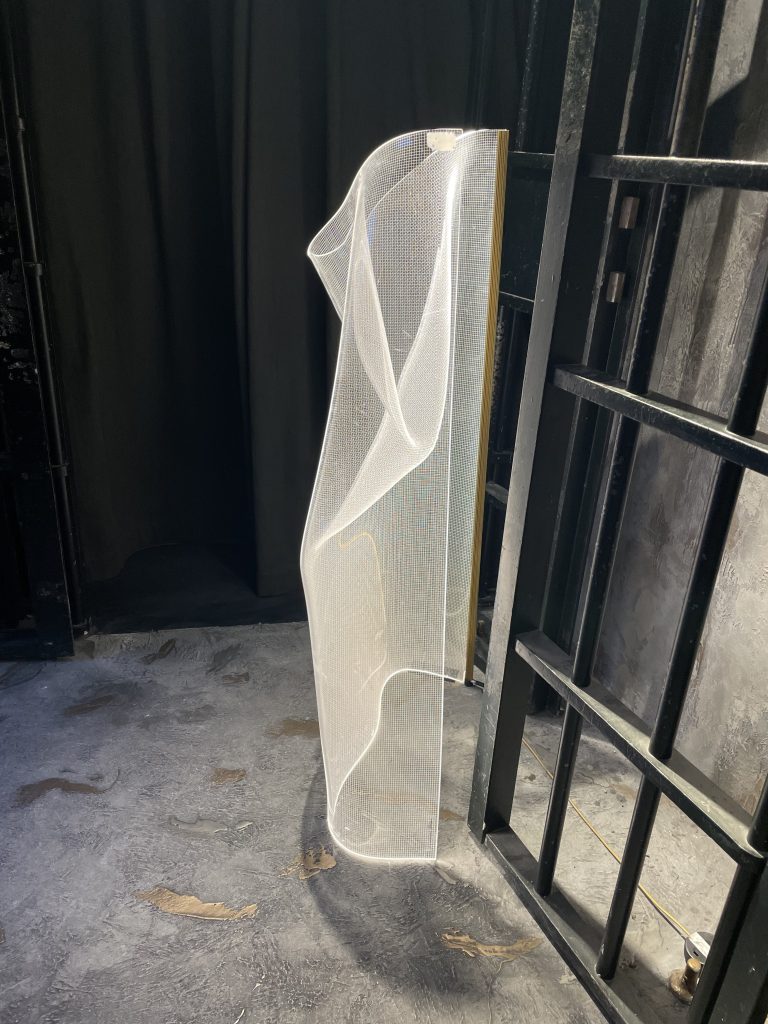
Fritz Hansen:
Fritz Hansen is an iconic Danish designer. I have to say, so many Danish designs are similar in style with clean lines, raw woods, and slightly different dimensions or scale. For me, Fritz Hansen nails it. I prefer his Essay dining table to every other brand. In my opinion, it is scaled perfectly: it’s balanced, I like the way the legs relate to the tabletop, and the shape and width of each. It’s so simple and perfect. Beautiful in form on it’s own, but enhanced by dining chairs of your choosing. Every style of chair gets along with this table.
The photos below are from an exhibition space, as well as the Fritz Hansen showroom.
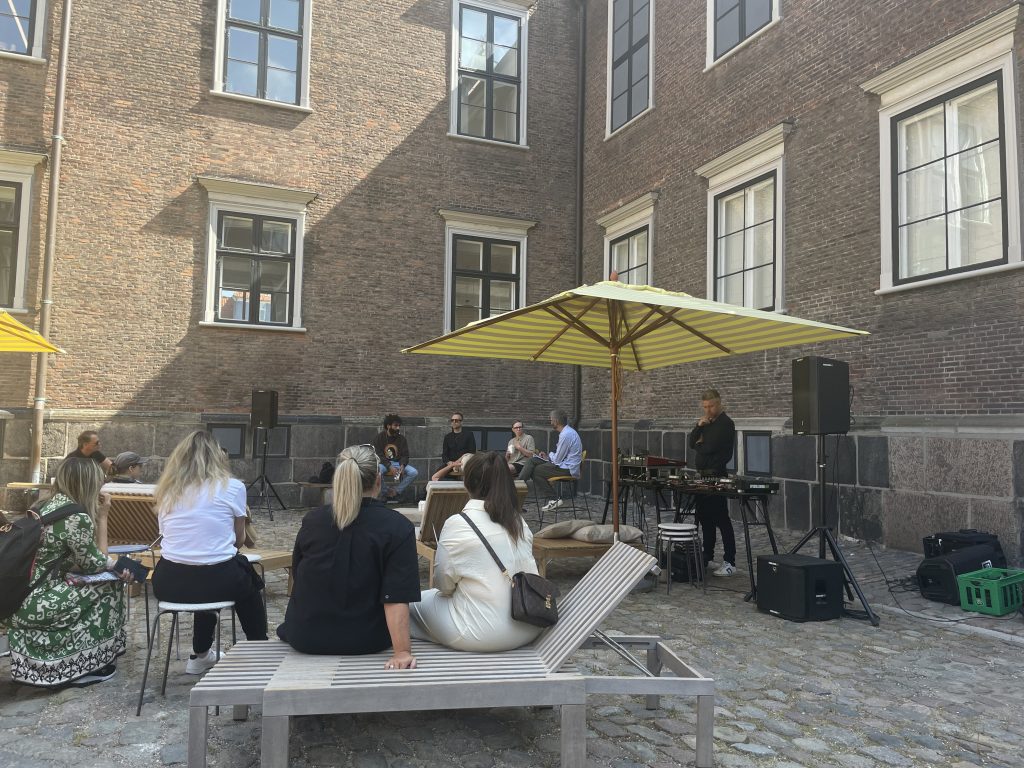
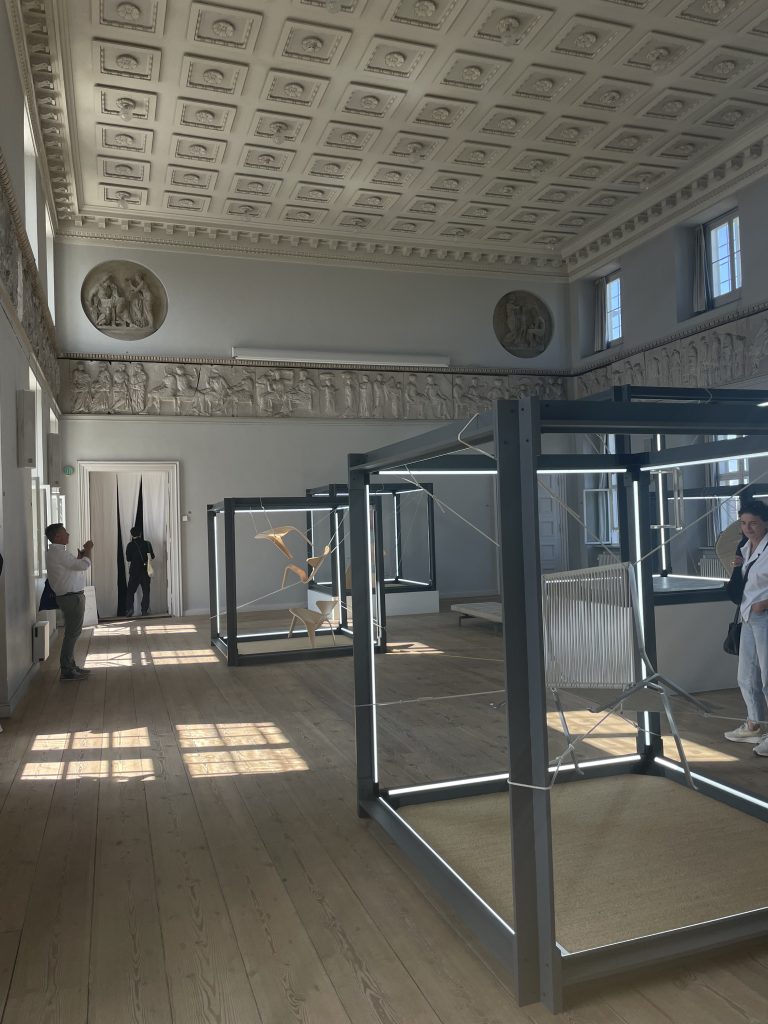
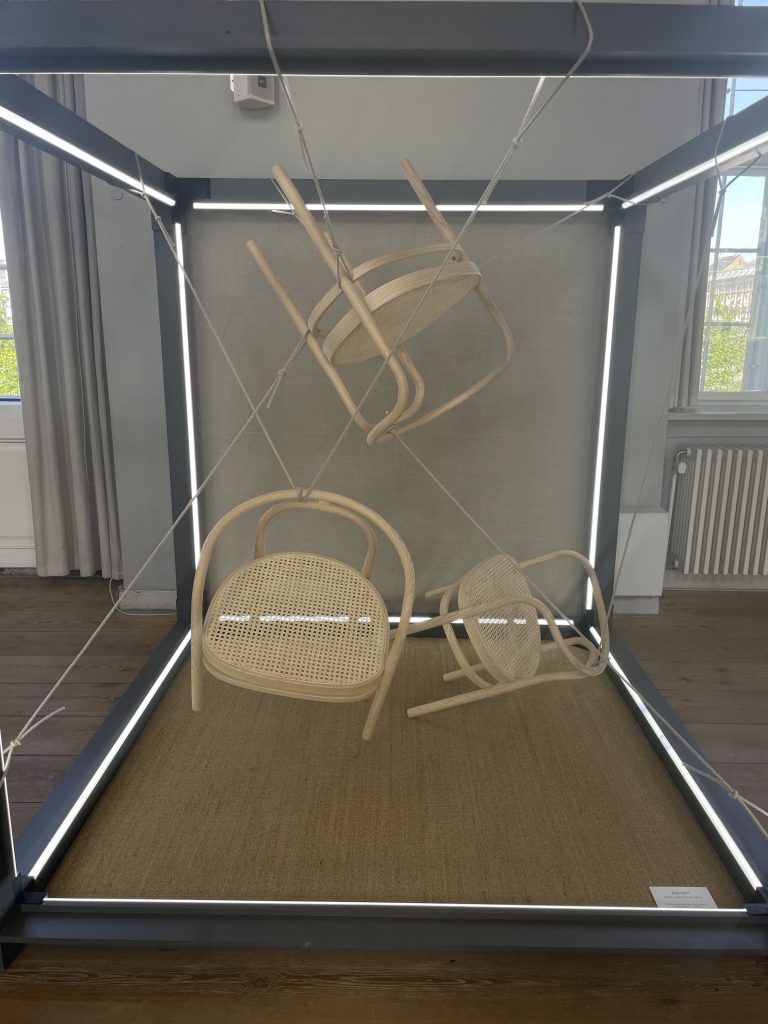
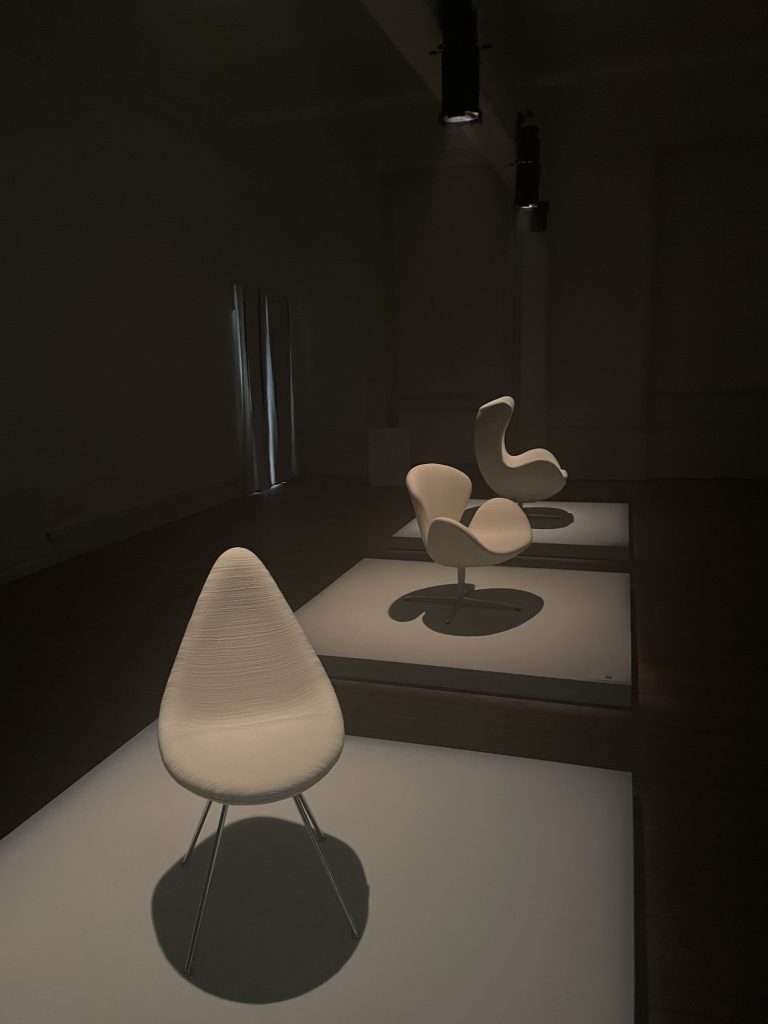
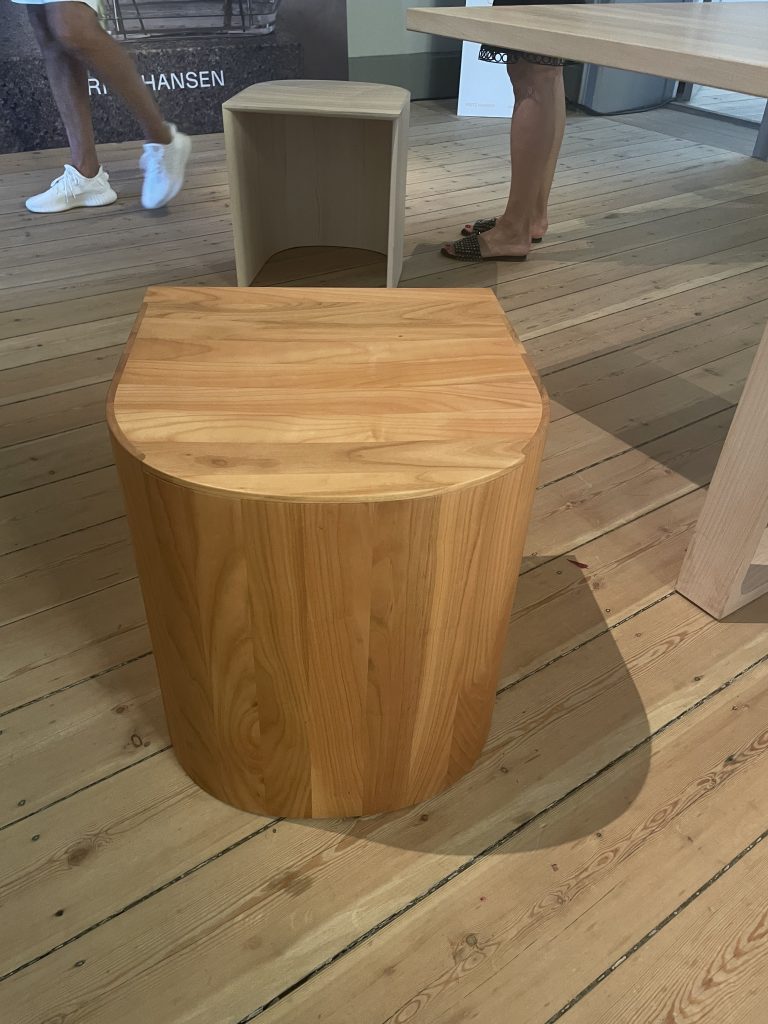
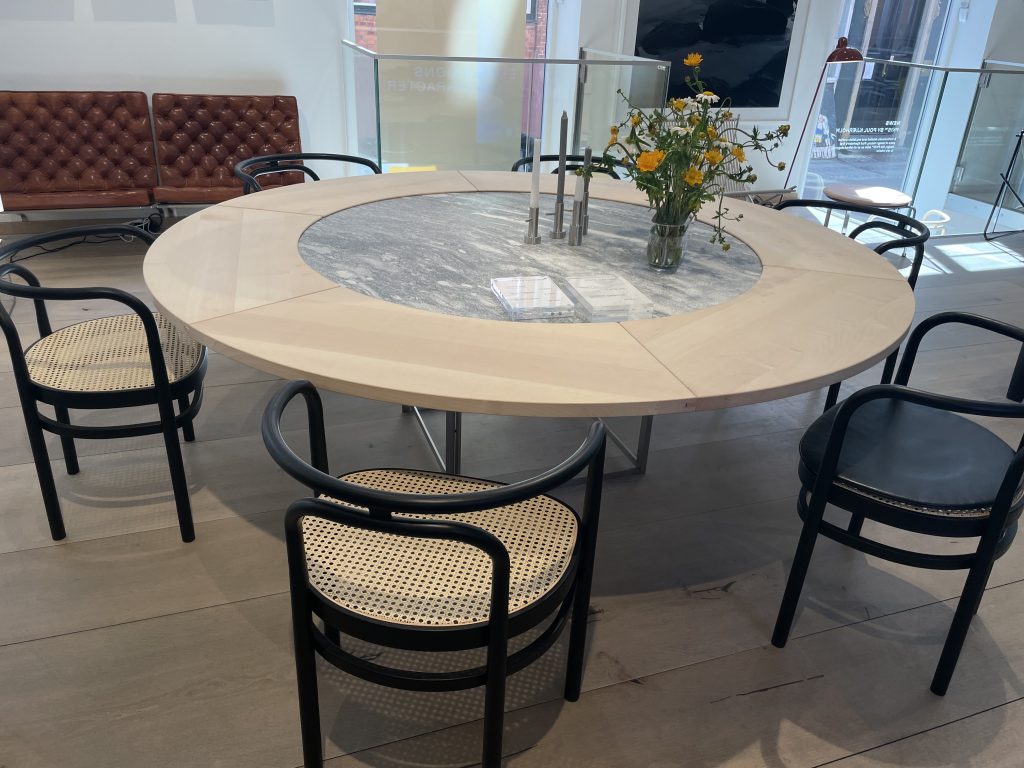
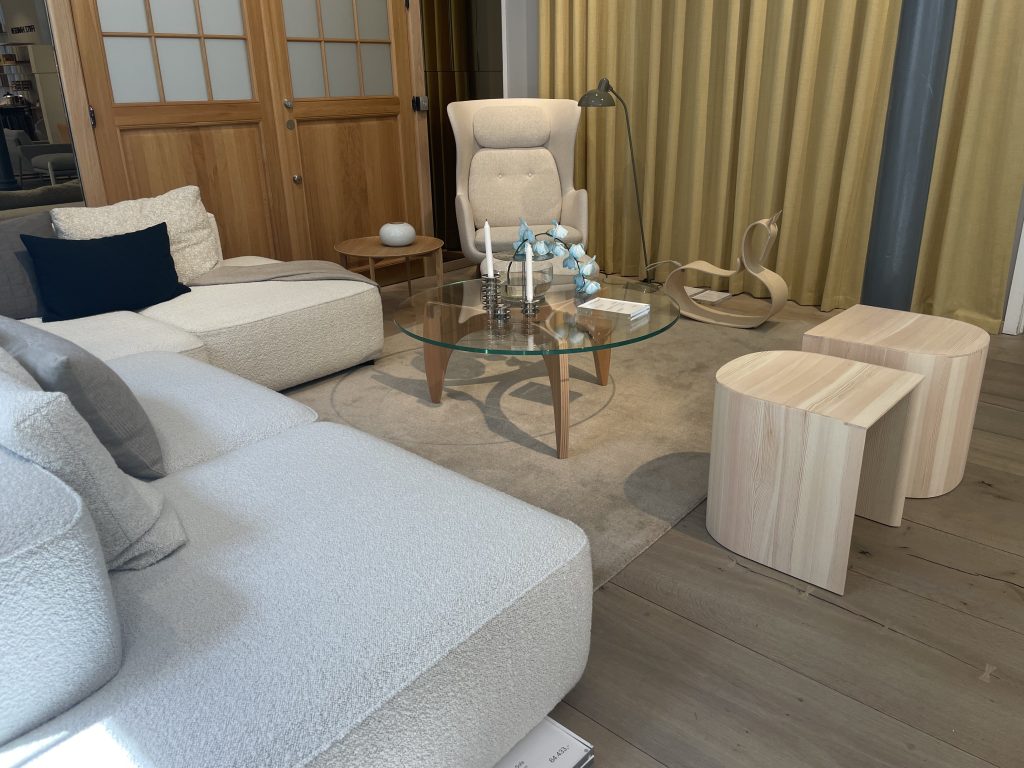
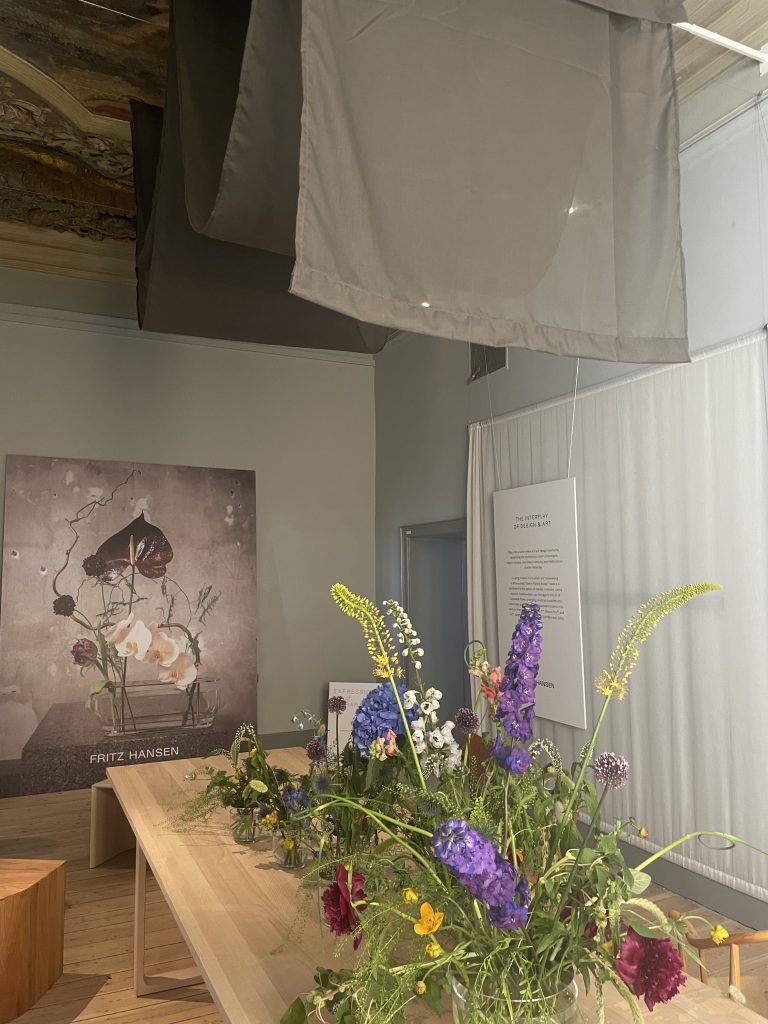
I really enjoyed exploring Danish design, and seeing it isolated from other European manufacturers. I walked away with a strong appreciation for the Danish aesthetic; raw materials, tonal in color, and restraint. You see these characteristics in the fonts on buildings, the architectural ornamentation, and even the way people dress. Items are pure in form, well designed and functional, and of a high quality. There are no frills, and I kind of appreciated that.



Well done